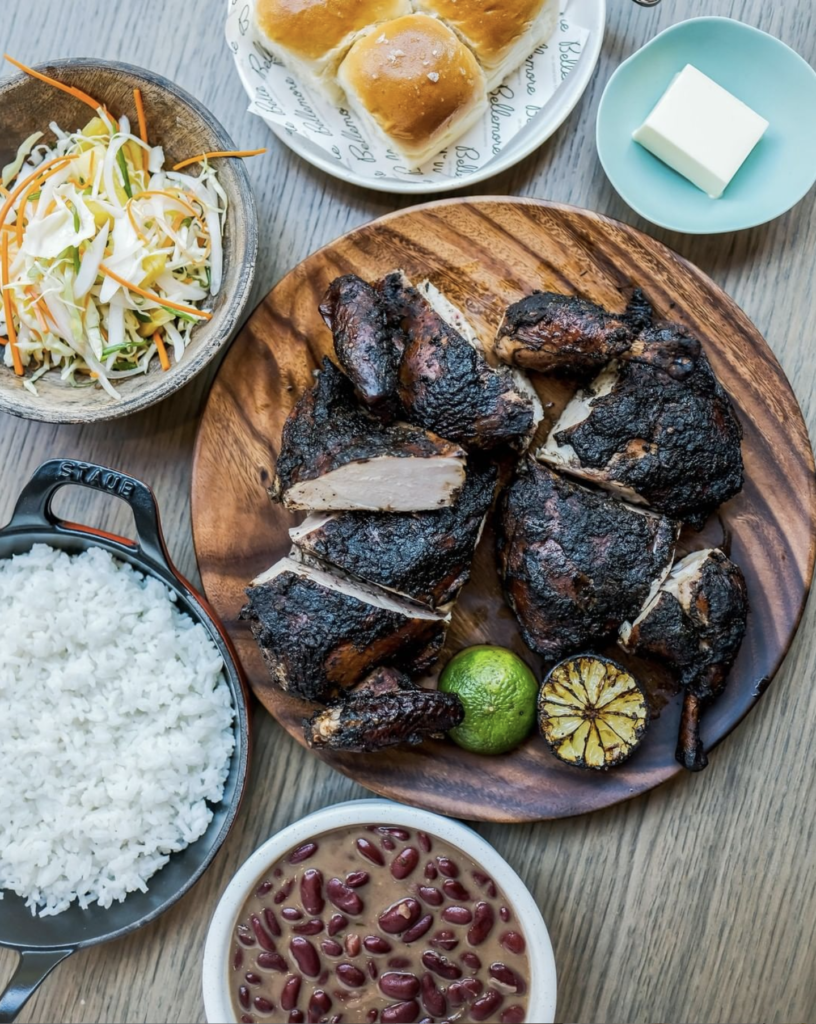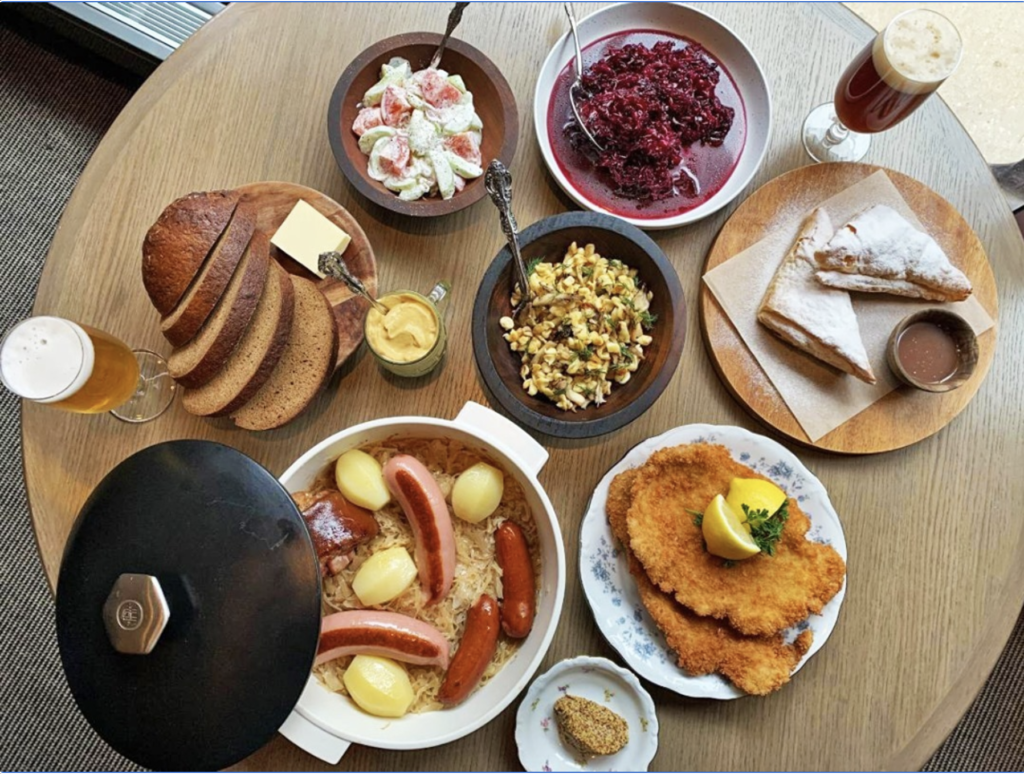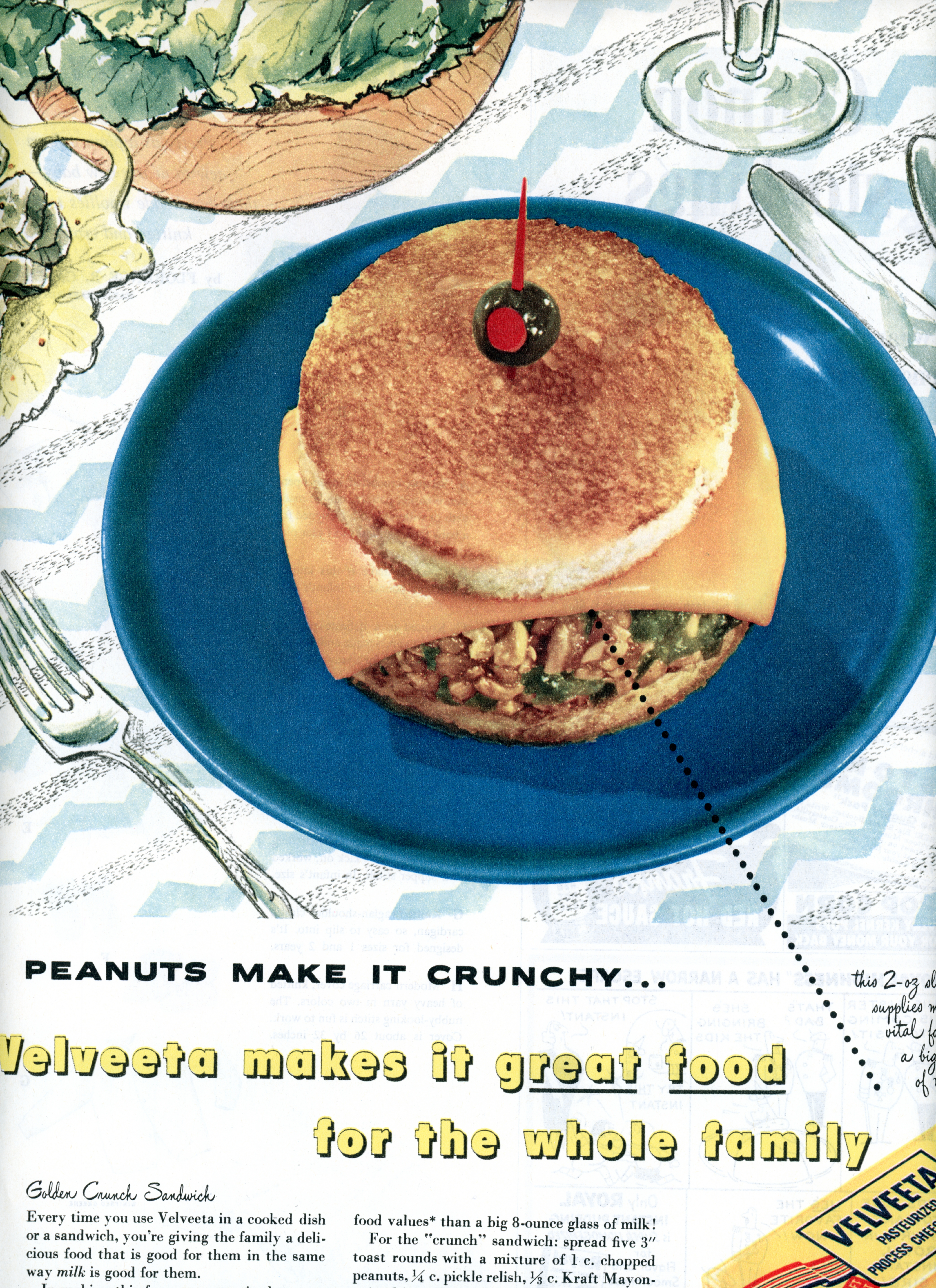Alla Vita—“a neighborhood Italian-American restaurant”—was announced several weeks ago as the latest concept from Boka Restaurant Group (BRG). It is set to occupy the former Bellemore space (itself, the former Embeya space) at the gateway to West Loop’s Randolph Restaurant Row.
Alla Vita’s name—a literal translation, it seems, of the Hebrew “l’chaim” (“to life”)—is rarely, if ever, used when toasting in Italy. Instead, Italians are fond of saying “salute” (good health) or “auguri” (well wishes) when the celebratory mood strikes. “Alla vita,” as a phrase, is reserved for formal constructions like “il diritto alla vita” (the right to life). As a carefree exclamation, “alla vita” does not really exist. It’s a ham-fisted metaphrase—a nonsensical, cynical bit of pandering. And doesn’t that just capture BRG in a nutshell?
For the restaurant group—named after its Michelin-starred mothership in Lincoln Park (located adjacent to that other “favorite” of yours)—has been bereft of creativity for years leading up to the pandemic. 2020’s tribulations presented BRG honchos Katz and Boehm with the perfect opportunity to trim some fat—Bellemore being the most obvious example.
But the transition from Bellemore to Alla Vita reflects a wider transformation within the group. While Katz and Boehm style themselves as masters of hospitality and humble hosts to “five of America’s great chefs,” the restaurateurs have abandoned forward-thinking concepts for the sake of franchising lowest common denominator fare. You will admit that Girl & the Goat and Momotaro do shine brightly as some of Chicago’s finest establishments within their respective genres. But such success belies an undercurrent of cynicism that has increasingly shaped BRG’s priorities.
No doubt, Katz and Boehm have conducted a masterclass in self-promotion over the years. They successfully lobbied for—and secured—the James Beard Foundation Award for Outstanding Restaurateur in 2019. (The pair lost to Stephen Starr—a true hospitality heavyweight—in 2017 and lost to Master Sommelier Caroline Styne in 2018 before finally notching the title. Their competition that year was hardly illustrious).
Later in 2019, Boehm co-hosted Chicago’s inaugural Welcome Conference alongside One Off Hospitality’s Donnie Madia. The event placed the errand boy of the BRG partnership in close proximity to bonafide hospitality behemoths like Danny Meyer and LEYE CEO Kevin Brown. It was surely an attractive association for such an egomaniac—and, you must admit, a savvy way of perpetuating Boehm’s farcical reputation as something more than a shallow businessman.
Yet he seemed like a huckster when held up against his “peers” (a term you hesitate to even use). And Boehm’s false, emollient manner betrayed a concern that lays less with the customer and more with himself. He’s good at playing the part of the “enlightened” restaurateur—you’ll give him that. But BRG exists principally as a vehicle for its partners’ enrichment, not the advancement of Chicago’s or the country’s food culture.
For any truly enlightened expression of hospitality must take its cue from the very top: leadership of substance, not style. Transcendent dining experiences are shaped by servers who feel empowered to forge genuine connections with customers. That empowerment is rooted in the degree to which employees feel valued, the manner in which they might take ownership over their craft. It takes as its fountainhead the involved owner whose good name is on the line, who cannot help—if they truly feel hospitality to be a calling—but sacrifice themselves in service of the guest.
Their restaurant—if it is to be enlightened—must be oriented towards offering its community something more than convenience and value. It must have an identity, a story, a sense of place, an element of soul. This is not to minimize business fundamentals, but great experiences—as Disney taught us so well—begin by surpassing expectations. To a restaurateur who only sees dollar signs, service merely becomes a mechanical job at the behest of mindless consumption.
With dearly departed Bellemore—a restaurant you visited a fair number of times—serving as a salient starting point, you will dwell on the nature of Boka Restaurant Group at present. Though BRG has positioned itself as one of Chicago’s premier providers of hospitality—with Boehm and Katz serving as newly-minted, award-wining cheerleaders for the city—Alla Vita’s announcement is the latest in a line of cynical moves.
While hospitality royalty such as USHQ, LEYE, and Disney define themselves by exceeding customer expectations, BRG has betrothed itself to boring spin-offs. Boehm and Katz exploit the success of a few overachieving restaurants, squeezing their name brands for all they are worth while—simultaneously—propping up pedestrian concepts from lackluster chefs. BRG should not enjoy the status cast on it from organizations like the James Beard Foundation and Welcome Conference. For while the group’s founders may flatter figures at a national level, they fall far short of nurturing Chicago’s battered and bloody fine dining scene.

With that in mind, let us begin.
Bellemore—originally known as “The Bellemore”—attracted all manner of attention ahead of its November 2017 opening. Chef Jimmy Papadopoulos had made his name at Bohemian House in River North, earning sequential Bib Gourmands from Michelin as well as the title of Eater Chicago’s “Chef of the Year” in 2015.
The cuisine at “BoHo” was decidedly Central European: a menu from 2016 lists traditional dishes like potato pancakes (with cured salmon), beef cheek pierogi, smoked knackwurst, spätzle (with Emmentaler cheese), pork schnitzel, butcher’s goulash, and chicken paprikash (with Czech potato dumplings). But Papadopoulos’s cooking—as nostalgic and underrepresented as those flavors are within Chicago—breathed new life into the genre too.
His slow roasted beets—paired with apples, smoked walnuts, crème fraîche, and molasses—drew praise as the “kind of dish you’d find at one of the high-end prix-fixe places in town.” The restaurant’s hanger steak featured a classic Romanian mămăligă (a cornmeal porridge not unlike polenta) juxtaposed by a pickled ramp relish. The Czech roasted half duck, meanwhile, was distinguished by a “sweet & sour plum marmalade” that seems to tip its hat towards Peking. Dessert included standbys like apple strudel along with a take on the city’s popular paczki donuts composed with banana Bavarian cream, peanut butter mousse, candied peanuts, and “double chocolate” ice cream.
Bohemian House, by all accounts, struck a sweet spot between the sharp execution of traditional fare and the advancement of new ingredients within that same mold. You never ate at the restaurant during its time but admire the menu’s sense of focus and restraint. One can tell how Papadopoulos sought to honor the recipes from which he took inspiration while, at the same time, looking forward and widening their appeal. Compared to the mixed bag of “Bohemian” items served at Bonhomme Hospitality Group’s two Beatnik locations, Bohemian House displays greater unity and coherence in its vision.
Papadopoulos left “BoHo” in June of 2016 “in a desire to spend more time with his young family” and, in the chef’s words, “to sit back and think about who I am as a chef and what I want to do next.” But a free agent in possession of such accolades cannot escape attention for long. Though Boehm and Katz “weren’t looking to do a new restaurant,” Papadopoulos—after being introduced by Boka (and Alla Vita) chef Lee Wolen—cooked for the partners that same July.
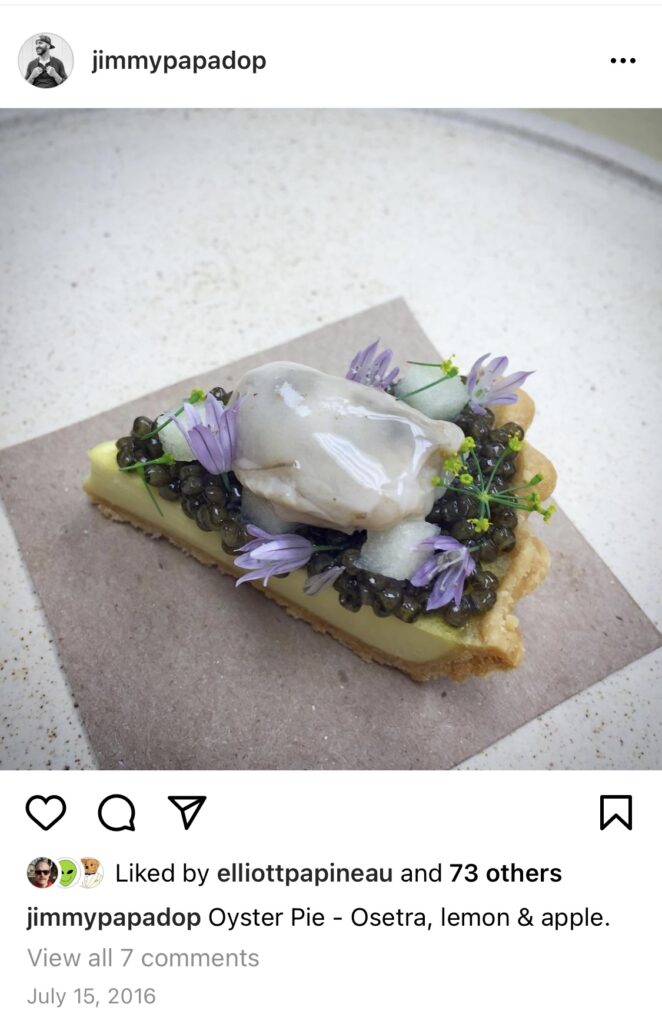
During that dinner—an audition for a future restaurant partnership—the BRG honchos told him “first and foremost, we have to like you” before asking “what is your voice? What do you want to say?” Papadopoulos cooked “from the heart” for Boehm and Katz, with their meal featuring his take on Thomas Keller’s legendary “Oysters and Pearls.” That dish—the inaugural “Oyster Pie”—would form something of a totem for Bellemore. But news of the new venture was still a few months away.
BRG announced its new project with Papadopoulos in late November of 2016, promising a “modern, retro, classic American vibe” with “bright, bold beautiful American cuisine.” It would take a few more months for the team to better define the concept (reconciling, perhaps, that oxymoronic dichotomy of “modern” and “retro”). Papadopoulos, meanwhile, spent his time “breaking down fish, making stock, and other prep work in the Boka basement” under Wolen. You think that stands as a great testament to the chef’s attitude towards his peers and his craft—all the more since Boehm made clear that BRG’s newest chef was “joining a formidable lineup.”
By March of 2017, the nature of Papadopoulos’s concept had taken form. “The Bellemore,” as it was known then, had done little to exactly define its menu but touted a broad vision for its take on American cuisine. “It’s everything, it’s all encompassing. The menu is going to feel very warm, very soulful, very fluid. It’s a new American classic and how you define that through a chef’s eyes. Kevin [Boehm] and Rob [Katz] want me to do what I do —- bright, bold, and beautiful cooking,” the chef explained.
Though “new American classic” has a better ring to it than “modern, retro, classic,” it is already possible to discern a foundational fault at the moment of “The” Bellemore’s genesis. Yes, it surely would have been wrong to pigeonhole Papadopoulos into perpetuating the same Central European fare he made his name cooking at Bohemian House. But it’s also wrong to characterize the chef’s style as “bright, bold, and beautiful.”

BoHo’s dishes were certainly bold: they combined smoked and braised meats with roasted vegetables, sweet and sour pickled notes, spicy mustards, and potato dumplings. In their rusticity and hedonistic appeal, you would even call such dishes “beautiful.” (Perhaps they are not beautiful in the manner of fussy tweezer food, but such items are altogether striking by way of the succulence they so proudly offer). But “bright”?
“Bright” characterizes tangy, refreshing flavors—a lightness of touch that seems in opposition to BoHo’s comforting fare. Perhaps pickled ramps, sauerkraut, and sweet-sour plum marmalade could be termed “bright” elements individually. But they stood only as contrasting notes within compositions like roasted duck and hanger steak that were, otherwise, proudly rich. Papadopoulos, at Bohemian House, demonstrated an unparalleled ability to satisfy guests with dishes that smacked of deep, layered flavors. He adeptly used “bright” contrasting notes to maintain balance and avoid the sense of heaviness that can sometimes characterize such traditional fare. But “bright” and “beautiful” are not words you would use to describe the style for which the chef was known, and it points towards BRG’s partners pushing him in the wrong direction—denying that individual “voice”—to suit their own desires.
And what’s with the name? “We talked about a lot of names, but The Bellemore felt right,” explained Papadopoulos, “it’s Mr. Bellemore’s manor and no one knows who Mr. Bellemore is.” Mr. Bellemore? Mr. Bellemore’s manor? You cannot say you hate the idea of staging dinners in a space that calls to mind a certain Gatsby-style grandeur. But the confusing part is that this element of storytelling seemed to be completely written out from the restaurant by the time it ultimately opened.

That day would come in late November of 2017, almost exactly one year after BRG announced the restaurant. Sure, they had aimed for a spring opening—and the Embeya space hardly needed much work done—but you’ll admit that’s a decent turnaround. Studio K—whose design credits include Monteverde, Girl & the Goat, BLVD, and Maple & Ash—was brought in to realize “Mr. Bellemore’s manor.”
As the firm describes it, “Bellemore mimics the essence of a grand manor, but reimagined as though the grandkids have moved in.” The space is “grandiose and whimsical,” the restaurant “timeless, not trendy.” It is defined by a “high ceiling,” “warm wood tones,” and “fanciful birds appearing throughout key art pieces.” With regards to the cooking, Studio K repeats the old “bold, bright and beautiful” chestnut but substitutes the term “new American classic” for the equally-vague moniker “Artistic American.”
While the chumps at Eater Chicago termed Bellemore “an old French manor dripping in luxury,” Papadopoulos gave Robb Report the best description of the space in 2018. He termed it “an old reclaimed manor with an Art Deco vibe” whose style translated into a menu that was “opulent, grand, but very soulful.” Though aesthetically stunted, Eater Chicago was sure to clarify that Papadopoulos “wasn’t given any parameters for the new menu” after blowing Boehm and Katz away during the private tasting that originally sealed the deal.
This freedom is particularly impressive given how much had been made of Papadopoulos’s humble beginnings. The chef went from “working the fish counter at Whole Foods,” to attending culinary school, working six years as chef de cuisine at a Schaumburg steakhouse, two years as executive chef at Bohemian House, and—on the back of that sudden success—developing Bellemore for BRG.
Papadopoulos lacked firsthand experience working for the country’s top chefs but found inspiration from The French Laundry’s and Eleven Madison Park’s cookbooks. And he was given pride of place alongside BRG standard bearers Pandel, Izard, and Wolen (to say nothing of flunkies like Tentori) to enact a vision of his own. Boehm and Katz deserve some respect for ceding such control to a chef who lacked the usual credentials as a creative lead. But, while you do not doubt that Papadopoulos formed the principle influence on his menu, that “bold, bright and beautiful” descriptor strikes you as a concocted corporate marketing paradigm he was told to play within.
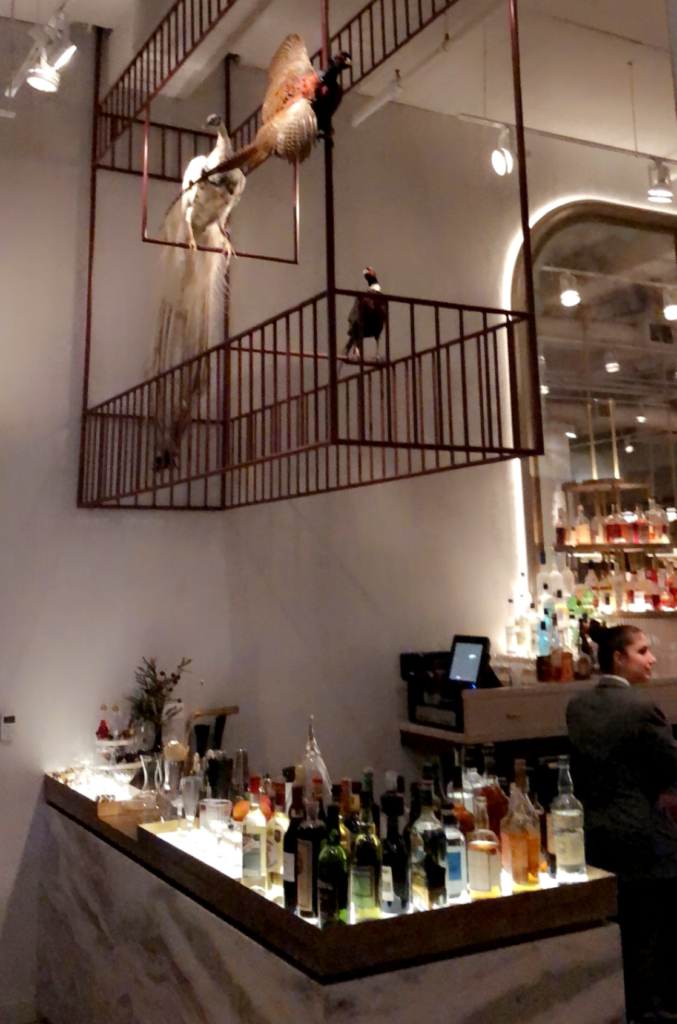
At opening, the restaurant offered a seven-course, $85 tasting menu—priced as one of Chicago’s very lowest—alongside a distinct à la carte selection. (Three of the tasting’s five savory courses were unique to that menu). The food was paired with a 200-bottle list of “high altitude wines” and cocktails made from “house-made tonics and other inventive ingredients.”
So what was eating at Bellemore like? You’d describe the experience as a feast for the eyes but rarely for the stomach.
Look, you know that marketing American cuisine is difficult. Call it “classic,” “contemporary,” “retro,” or what have you. American cooking—if it cannot be fit into tidy categories like “steakhouse,” “farm to table,” or “supper club”—resists providing the sort of snappy lure that public relations professionals use to put asses in seats. There is none of the superficial, “exotic” appeal that any flavor of the month ethnic cuisine offers. There is no sense of wonder or of transportation to “another world” for advertising copy to evoke.
“American cuisine”—or even “new American classic,” the term BRG finally settled on to define Bellemore—is imbued with as many meanings as there are citizens in this fair land. The fractured nature of the country’s social and cultural fabric ensures that now, more than ever, myriad definitions of the national cuisine coexist and clash.
While some immigrants (and their children) freely give the riches of their respective homelands over to the great “melting pot” of domestic cookery, other groups—principally Chinese- and Korean-Americans—jealousy guard their recipes. Journalists and influencers of this ilk direct social media mobs against chefs who dare find influence in a culture that is not their own. They wield words like “appropriation” and “authenticity” in an effort to claim the moral high ground. But it only amounts to gatekeeping—to taking what they want from American culture while refusing to participate in a good-faith exchange.
So any chef offering “new American classic” cuisine need be quite careful as to where they find inspiration. And for a chef like Papadopoulos—who, up until that point had played only within the boundaries of “steakhouse” and “Central European” cookery—it must have been hard to know where to begin.
“Bright, bold, and beautiful”—that familiar refrain—formed, you think, the one guide in defining that essentially amorphous “new American classic” genre. With those two vagaries front and center, it would always be hard to tout just what guests were going to Bellemore to eat. The menu certainly wasn’t going to have anything to do with the Bohemian House fare that made the chef’s name. But “Mr. Bellemore’s manor” would surely look quite elegant, and the whole experience was billed as something like safe, approachable cooking in a sexy space.
The title page of Bellemore’s opening menu provides one final cue as to the restaurant’s sense of self-definition: “As a hungry (literally) young boy, Chef Jimmy Papadopoulos taught himself how to cook through studying the classics: The French Laundry Cookbook, Culinary Artistry & Charcuterie. Without the traditional upbringing of award-winning chefs as his mentors, we felt it was only appropriate to share chef’s culinary vision the way he was raised: through storytelling.”
Just who the “we” in that statement is supposed to refer to is unknown. Boehm and Katz apparently prized Papadopoulos’s voice and vision, yet Bellemore—as an entity—felt the need to filter it through this strange “storytelling” concept.
In practice, that conceit means that each of the dishes across the menu features a surfeit of additional descriptors. For example, a vegetable soup features braised beans and toasted sourdough, a fall salad contains port-braised quince, crispy grains, and whipped gorgonzola, and a preparation of veal sweetbreads is described as glazed with molasses butter and served with braised fermented cabbage. To clarify, these italics are written into the menu, along with plenty of capitalization and bolding to provide the text with some form of visual intrigue.
However, you must contend that using an exhaustive amount of adjectives to characterize each component of every dish has little to do with storytelling. Papadopoulos’s meteoric rise within the restaurant world is a story. His family history, his nostalgias, the inspiration he has taken from the cookbooks he loves—those are stories. But sharing what amounts to factual information regarding each given preparation on the menu does nothing to tug at the heart strings or inspire a sense of wonder. The additional descriptors might help whet appetites, but nothing so simple can actually conjure the magic of hospitality.
Rather, it reads as a shallow attempt to wrap the restaurant in a grand gastronomic tradition whose ranks it has not earned the right to join. It entices guests to imagine they are in a dining in an establishment that reflects some level of emotional depth from its chef. But, when that element is missing from the food itself, such a gimmick reads as a cynical bit of window dressing on what amounts to a pretty space. It makes it seem like somebody is hedging their bets because the dishes on the menu can appeal on the basis of their titles or a generic description of their constituent ingredients (as is typically done).
In fact, as computational linguist Dan Jurafsky describes in The Language of Food: A Linguist Reads the Menu, “long, wordy menus with lots of filler words occur in…middle-priced restaurants…like Ruby Tuesday, T.G.I. Friday’s, Cheesecake Factory, or California Pizza Kitchen.” This kind of “overmentioning” is viewed “as a symptom of ‘status anxiety’” given that “middle-priced restaurants are worried…they aren’t fancy enough, so they go out of their way to reassure you.” Expensive restaurants typically avoid these “appealing adjectives” and, instead, make use of “rare, long, fancy words” and “mention the origins of the food more than 15 times as often as inexpensive restaurants.”
While Bellemore’s opening menu did list “slagel family farm’s Cornish hen” as one of its entrées, it stands as the only example of any specific sourcing. (“Atlantic mackerel” and “Scottish wood pigeon” might also count, though to some lesser extent). Meanwhile, “bright, bold, beautiful” looms over the tasting menu in a drastically larger font than everything else. It even features an illuminated uppercase “B.” In the context of Jurafsky’s research, does such an emblem not scream insecurity? Does it not prime patrons to perceive Papadopoulos’s cooking through a particular prism—rather than let the chef’s dishes surprise and stun free of any expectations?
Despite being branded by its designer as “timeless, not trendy,” Bellemore—from the start—sought a sort of superficial social media appeal in which the restaurant’s food was relegated to a mere ornamental role. That is why the dishes are dressed up with so many descriptors, and why the aesthetic of “Mr. Bellemore’s manor”—alternatively referred to as a “French manor” (despite its “new American classic” rooting)—was given so much attention.
An interview with Papadopoulos at the time of the restaurant’s opening really hammers the point home. When asked what excites him the most about Bellemore, the chef prizes the fact that the concept “really holds no limits” and that the team “can focus on brilliant hospitality across the board.” When asked what sets the restaurant apart from others in the area, Papadopoulos answers that “the design of the room is flawless — bright, bold, and beautiful. When you walk in, the space has such a collected, opulent, brilliant charm. It just feels so soulfully unique — classy, cool, and relaxed.”
By quoting this, you do not mean to pick on the chef’s manner of dealing with the media at all. A chef should be paid due respect as a craftsman and not reduced to serving as a public relations mouthpiece. It’s incredible telling, of course, that he had little to say about his menu—about his “vision” or “voice” or the “story” being told through his dishes. Rather, it seems like BRG—who, no doubt, fed Papadopoulos the marketing copy he regurgitated in that interview—saw Bellemore’s appeal as primarily visual. Boehm and Katz wanted a sexy space helmed by a rising star that would serve boring, palatable fare sure to please Chicago’s see-and-be-seen food philistines. The “storytelling” gimmick simply served as a hollow theme for dishes that lacked any coherent connection to tradition, place, or the chef’s identity.
This detestable dynamic is no better represented than by the “Oyster Pie,” that riff on Thomas Keller’s “Oysters and Pearls” that had won the BRG honchos over during their private dinner with Papadopoulos. Keller’s classic—one of only a few dishes that have remained on his menus at The French Laundry and Per Se over the years—stands as an intricate, superlative textural experience. A soothing, warm sabayon forms a tongue-coating blanket upon which delicate orbs of tapioca, osetra caviar, and meaty oysters dance across the palate. It’s visually arresting—of course—but accented with notes of oyster juice and dry vermouth that ensure each bite is flavorful and satisfying.
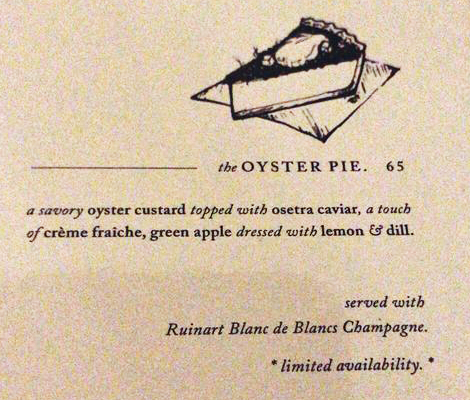
Bellemore’s “Oyster Pie”—which served as the restaurant’s totem from opening until some time in early 2019—is an altogether different proposition. It was billed, in “storytelling” style, as “a savory oyster custard topped with osetra caviar, a touch of crème fraîche, green apple dressed with lemon & dill.” The item debuted at a sticker price of $85 before earning its own special place—along with an illustration—opposite the rest of the listed dishes. There, it came in at $65 and included a glass of 2009 Moët & Chandon Grand Vintage Champagne (later replaced by a glass of non-vintage Ruinart Blanc de Blancs Champagne).
By all accounts, $65 is an absolute steal for something like half an ounce of caviar and a glass of perfectly pleasurable bubbly. But the dish privileged social media appeal—experiential “shock and awe”—at the cost of delivering a thoughtful expression of two totemic luxury ingredients: oyster and caviar. It would serve as an easy way to boost Bellemore’s profile early on in its life—obscuring a lack of imagination and identity—but, ultimately, served as an anchor around the restaurant’s neck.
You do not hate the idea of the “Oyster Pie.” Its inspiration, irreverence (towards hallowed luxury totems), and accessibility are clear virtues. But the dish, by all appearances, barely changed from when it was first served to Boehm and Katz. Did the BRG honchos like it so much that they impeded the kind of tinkering that transforms “good” to “great” to “stunning”? Did they simply see a highly-marketable manifestation of Papadopoulos’s talent that they could lean on as they pursued building Bellemore’s aesthetic appeal?
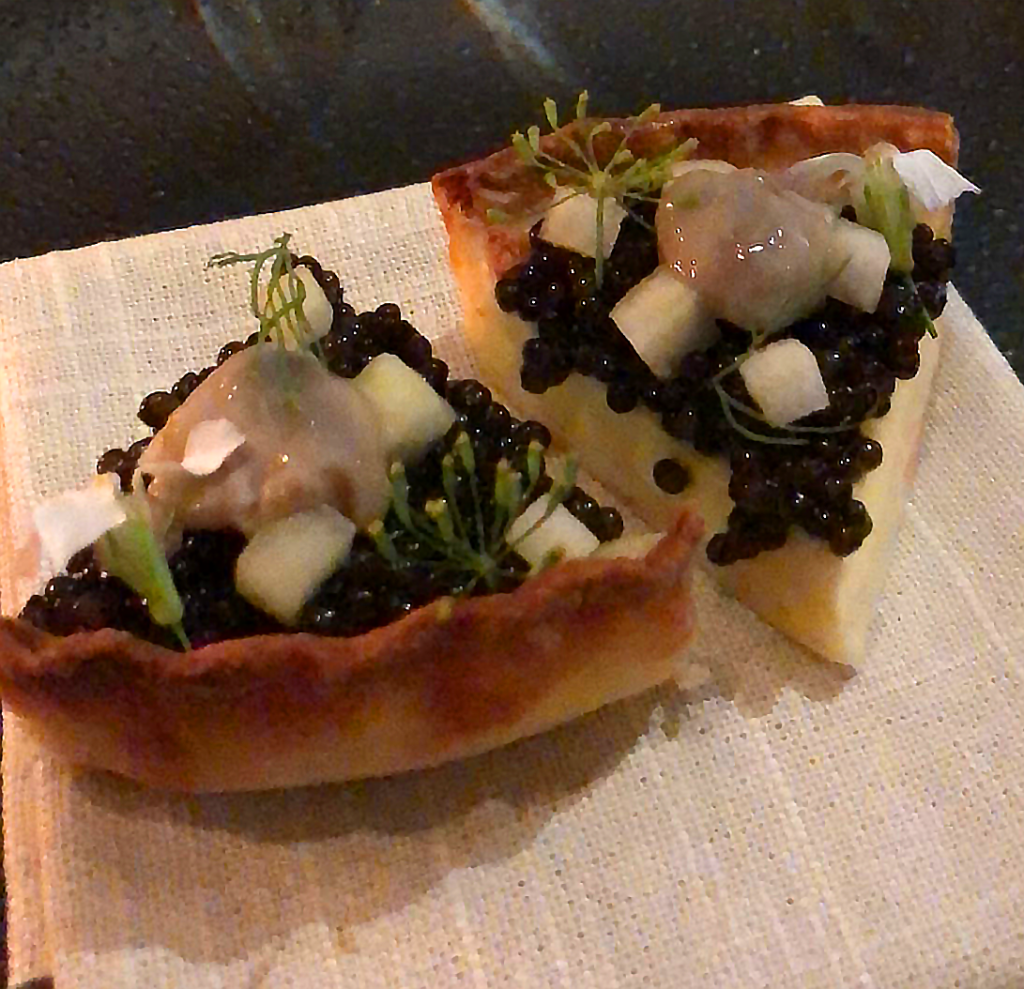
You ordered the “Oyster Pie” every time you visited the restaurant and must have eaten something like a dozen slices across all your experiences before it mysteriously disappeared from the menu. As a host, the item proves impossible to resist. It invites astonishment from one’s guests and provides the perfect photo-op. For there is something obscene about so cavalierly combining luxury ingredients in a crusty, rustic form. It undermines their totemic status, which often drives chefs towards pristine preparations that lack the stamp of their personality. Oysters and caviar need not be worshiped. They may be incorporated into novel compositions where their prized qualities shine alongside inventive accompaniments. As always, achieving balance remains the principle test of success.
The “Oyster Pie” was an anti-totem. It served as a megaphone for Papadopoulos’s culinary voice, signaling that he was a chef who could irreverently and engagingly wield luxury ingredients in pursuit of hedonistic pleasure. At the same time, the dish served as a fitting posterchild for the “bright, bold, beautiful” mantra. It embodied the same sense of decadence drawn from the manor aesthetic.
Despite being irresistibly drawn to ordering it, you must admit that the “Oyster Pie” was fatally flawed. It never delivered, in terms of flavor or texture, on the decadence its appearance promised. Conceptually, flaky pie crust and a smooth oyster custard sound like wonderful foils for caviar. In practice, however, they formed an impediment to its enjoyment.
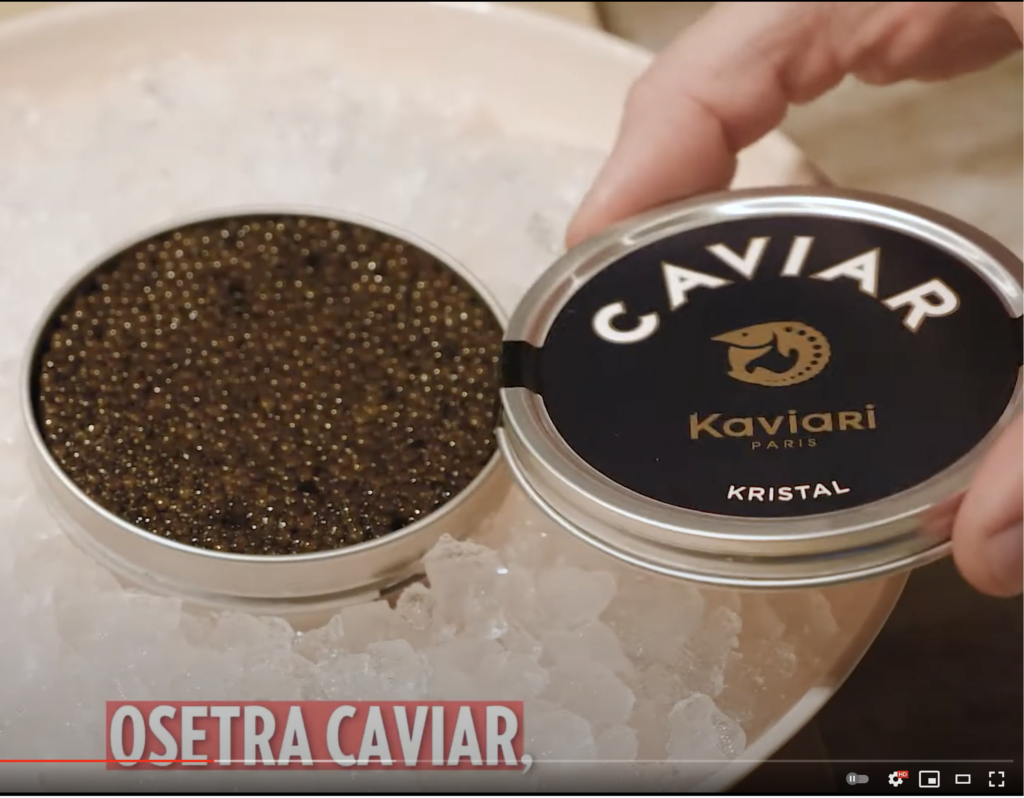
The average bite into the “Oyster Pie” would include a sliver of crust that would crumble on the palate and yield to a layer of the oyster cream that, proportionally, was twice or thrice the thickness of the caviar spread on top. The roe itself—though it claims the name osetra—comes from Kaviari a relatively unknown purveyor. The company sells an “Osetra Gold” caviar, but Papadopoulos can clearly be seen using their “Kristal” range.
The sturgeon from which the “Kristal” is made, is a cross between the Acipenser Schrenkii (Amur) and Huso Dauricus, (Kaluga) sturgeons. This blend is considered a “Kaluga hybrid” and has no relation to the Acipenser gueldenstaedtii (Osetra) sturgeon.
Marky’s Caviar provides some enlightening information on this mislabeling: “Hybrids of Kaluga Sturgeon and Amur Sturgeon (Acipenser Shrenkii) are incorrectly sold as Osetra caviar or as Royal Caviar. Due to the specifics of this species, caviar obtained from the cross bred generation resembles Russian Osetra in color and appearance of the pearls, but the taste is quite different. Cross breed products are very abundant in Europe and China, so be aware of the source of your caviar and assure the species are indicated on the CITES label.”
It is also important to consider that “Kaluga is an endangered species whose export from Russia is strictly limited,” and that “in today’s international gourmet market, almost all the Kaluga caviar is supplied by aquafarms, which prefer to work with hybrids resulting from crossbreeding Kaluga with other sturgeon species.
You would not have faulted Bellemore for calling their Kaluga hybrid caviar “Kaluga,” but to advertise it as “Osetra” on the menu and in the press seems strange, if not cynical. Perhaps conditions during the filming of that video demanded the chef use a substitute product, and guests actually were served Osetra when dining at the restaurant. In practice, whatever sturgeon it came from, the caviar lacked the delicacy to overcome combination of crust and custard.
Rather than resolutely popping on the palate—which is to say, through the masticated crust-custard cushion—the roe’s tendency was to turn to mush. Such a texture can be perfectly enjoyable, particularly when the caviar itself displays an intensity of flavor and is amply spread across crackers. But it struggled to overpower the crust-custard layer and strike cleanly onto the palate. The ingredients would mix, the roe being enveloped by the more substantial proportion of the other two, and the tiny cubes of green apple would arrive. Perhaps that solitary oyster would slide in their too—and the accompanying flavors of lemon and dill.
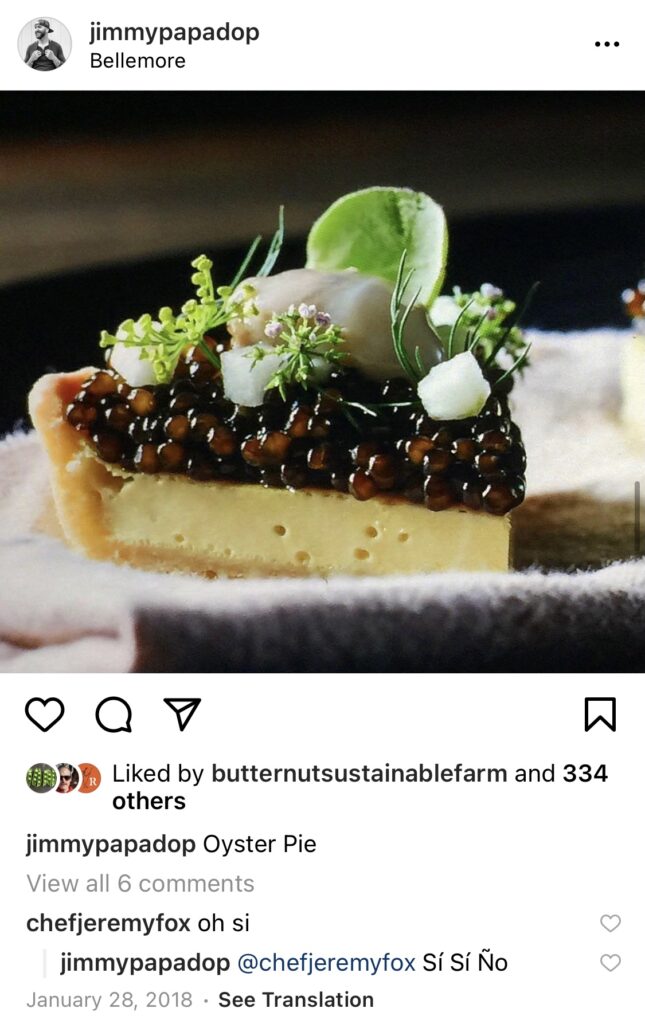
As a package, the combination is pleasant—not stunning. It was more a pie dish than a showcase of oyster and caviar. And that sounds like quite a weird thing to say, given the pie’s filling, but you think the “savory” oyster custard could have been amplified. Sure, it tied the other elements together in its neutrality of flavor. But the structure of the bite meant that you mainly perceived the blandness of the foundational crust and custard elements.
Their seasoning was appropriately dialed back in a bid to better showcase the more luxurious elements at play. But, as you have said, the caviar was not of a caliber that would impress if served alone in a traditional service. The Kaluga hybrid’s texture and flavor intensity were totally average. The roe was visibly “there,” but it didn’t sing. And the oyster—removed from its brine and perched atop the pie—was nothing more than a sad ornament. The bivalve would form part of the second or third bite into the dish and simply add a trace element of added texture. It, too, relied on the oyster custard—as well as accompanying garnishes—for seasoning. And it, too, fell short of adding any obvious burst of flavor to the composition.
The “Oyster Pie” photographed well but felt, across all the times you tried it, like little more than an ostentatious hodgepodge. Conceptually, the dish could have worked. Papadopoulos was right to seek inspiration from Keller’s warm, custardy “Oysters and Pearls.” And a miniature pie slice—with a filling made from oyster—formed a clever vehicle for the enjoyment of sturgeon roe.
But the pie—without any of its toppings—was not good enough to stand on its own. And it could not hope to be saved by a thin layer of caviar, a solitary oyster, and a few cubes of green apple. A smaller pie might have remedied the proportional imbalance and better expressed the luxury ingredients, but such a downsizing would still demand a more richly flavored custard filling. Given how little the “Oyster Pie” changed from its first iteration, its popularity with the BRG honchos might have prevented such a fundamental transformation of its size.
The dish looks and feels right for the price. It can be easily held and enjoyed over the course of a few bites. It lacks adequate intensity but fulfills the expected experience. So even if reducing the ratio of the crust and oyster custard improved the eating experience, a smaller overall size might have damaged the item’s perceived value and viral appeal. The gambit of including a glass of Champagne with every order speaks to the same instinct: customers are dazzled by a trifecta of luxury totems that need not—for the price—justify themselves in terms of connoisseurship. Any special occasion diner would be oh-so-easily charmed, and BRG could all but guarantee patrons would perpetuate the “Oyster Pie” experience on social media.
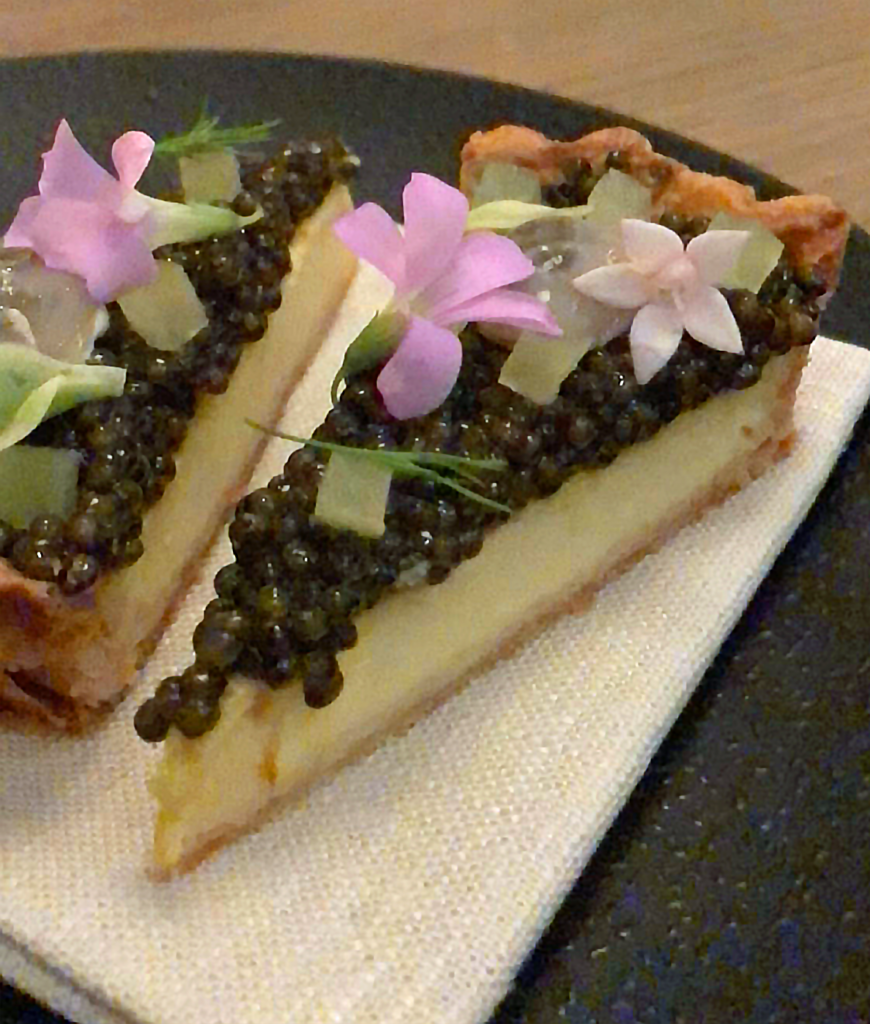
That Bellemore would cynically prize such a photo-op—and its implicit marketing appeal—more than the sincere enjoyment of caviar and oyster in a clever form that leaves a bad taste in your mouth. You think your opinion is corroborated by the fact that the form of the “Oyster Pie” did, in fact, change sometime around July of 2018. After being open for more than half a year, the restaurant substituted the thick wedges of pie for a slender, elongated slice. This, no doubt, added to the dish’s perceived delicacy since customers could more easily enjoy it in smaller morsels. This form also better isolated the oyster towards the outer ridge of crust, surrounding the bivalve with more ample amounts of apple that might serve to flavor it.
The second version of the “Oyster Pie” was a slight improvement, but you wonder why it took so long. The genius of the dish is its irreverence towards untouchable luxury totems, yet the pie’s basic form was not challenged in the two years since it was originally served at Papadopoulos’s private “audition.” Its final, refined form seems to admit there was, indeed, something wrong with the composition. But perhaps the viral quality of the “Oyster Pie” proved too valuable to tinker with. It solved the chef’s challenge of having to define Bellemore’s cooking beyond “bright, bold, beautiful.”
Mike Sula, writing for the Chicago Reader, gushed that the “Oyster Pie” was “a gorgeous creation” that has “become something of an Instagram star.” Robb Report, in naming Papadopoulos one of the seven “Best Young Chefs in America” described the dish as “grand but in a tiny package…[an] inspired little bite that’s as beautiful as it is delicious.” When Bellemore was also listed as one of the magazine’s “10 Best New Restaurants in America,” the “Oyster Pie” was called “the ideal opener” and a dish that “has become a star in its own right.”
Phil Vettel—never to be outdone when it comes to laying it on thick—declared that “Papadopoulos’ [sic] food echoes the theme of restored elegance, beginning with his oyster pie, which probably is destined to become the dish of 2018 in Chicago.” The chef, in that same article, shared how he “was afraid (the dish) would make us look stuffy and pretentious.” But, “in the first month, we sold 225 orders. It’s turned into this bougie bite, and now we sell roughly 20 orders a night.”

“Bougie bite,” doesn’t that say it all? A slice of superficial luxury in a space that mirrors the same craven concern for its appearance on social media. BRG conceived Bellemore, you think, as a “bougie restaurant.” They harnessed the name recognition of a hot cult chef. They gave him nominal creative control but, in truth, corralled him within the nonsensical “bright, bold, beautiful” paradigm. They saw a viral sensation in the rendition of the “Oyster Pie” that Papadopoulos first served them in 2016, and they knew that—with the right marketing blitz and a sexy Studio K aesthetic—the dish could all but carry Bellemore’s opening alone.
Boehm and Katz are savvy enough to know that some large proportion of diners—particularly given the sorry state of Chicago’s dining scene—are content merely to be seen eating sexy things in a sexy space. They know that the ethically bankrupt carnival barkers that make up the national food media could not resist championing such a visually appealing, neatly-packaged totem for the restaurant. (It’s outrageous to think that Bellemore ranked on a list of “best new restaurants” alongside establishments such as The Grill, COTE, and The Charter Oak that would be skewered for selling something as ill-conceived as the “Oyster Pie”).
But Chicago’s local critics—who, even in 2018, counted themselves lucky to merely remain employed—would never have the discernment to pick apart such a dish. They only saw easy content, an attractive banner image for their articles. They abandoned, long ago, any sense of gravitas and chose to become cheerleaders. Thus, other than a brief bit of hanging wringing about how “expensive” the $65 splurge was, they took the bait and propagated the thought that Bellemore’s signature bite was a bonafide luxury totem.
Sula the sycophant referred to the bargain bin Kaluga hybrid (that was masquerading as Osetra) as “primo caviar.” Vettel lauded the “Oyster Pie” as “rich, creamy and briny all at once, with a gentle acidic finish.” But both men simply fed into BRG’s mastery of marketing. They put their stamp of approval on the rudderless restaurant’s lodestone, knowing—as perhaps Boehm and Katz did—that the city’s denizens, like the “journalists” themselves, would find satisfaction in the appearance of luxury rather than its realization.
The “Oyster Pie” did not serve to shield an awful menu. Papadopoulos is, you think, a humble and hardworking chef who gave the establishment his best. But you cannot help feel that the “bright, bold, beautiful” approach denied the essence of what made his food at Bohemian House so acclaimed. BRG stripped the chef’s rich, soulful cuisine of its Central European grounding—and that is totally fine, for the group was not looking to rehash what Papadopoulos had previously done. However, they replaced a sense of tradition with a shallow mantra, a slick space, and a perplexing “storytelling” theme. They surrounded Papadopoulos with the trappings of a “hot restaurant” but did nothing to conjure a singular identity or pervasive sense of soul that might inspire and guide its operation.
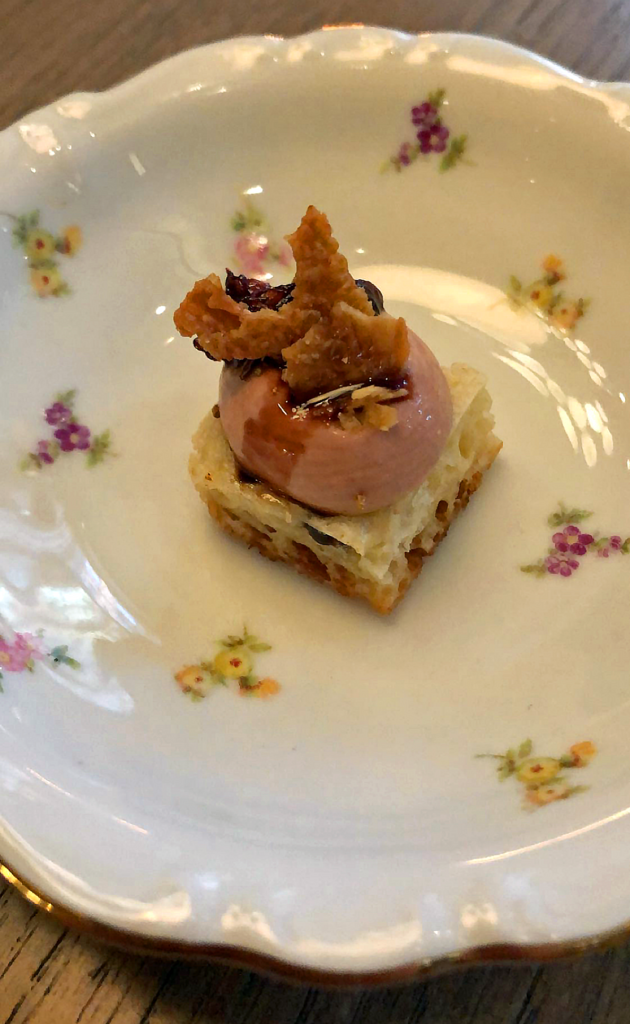
In practice, that made Bellemore something like a “Boka lite,” an impenetrable expression of modern American cooking that was content to only skim the surface of the national culture. In trying to be everything to everyone—in ensuring that nobody would encounter a forceful, eccentric dish that might burst the bubble of their “luxurious” evening—Bellemore inherently devalued domestic cuisine.
Like Boka continues to do to this very day, the restaurant paraded laudable ingredients but resisted applying any particular technical or historical grounding to its preparations. It replaced the “story” (as told through the singular manner a particular chef uses great ingredients to shape their compositions) with the “storytelling” of a few italicized words. Bellemore embraced a bland, proto-Californian manner of cookery that abandoned any sense of Chicago or the Midwest. It fed a phantasmic, lowest common denominator sort of customer for whom palatability and prestige always outweigh distinction and self-expression.
Bellemore’s menu embodied a paint-by-numbers approach that can hardly be called “opulent, grand, but very soulful.” Papadopoulos—though he touted “no limits” to the cuisine—crafted dishes that were both two-dimensional and sparse. You will admit that not every restaurant needs to challenge its guests with ham-fisted attempts at creative flavor combinations. But, if an establishment seeks to define itself through a certain classicism and restraint, it had better be a bit more generous with its portions.
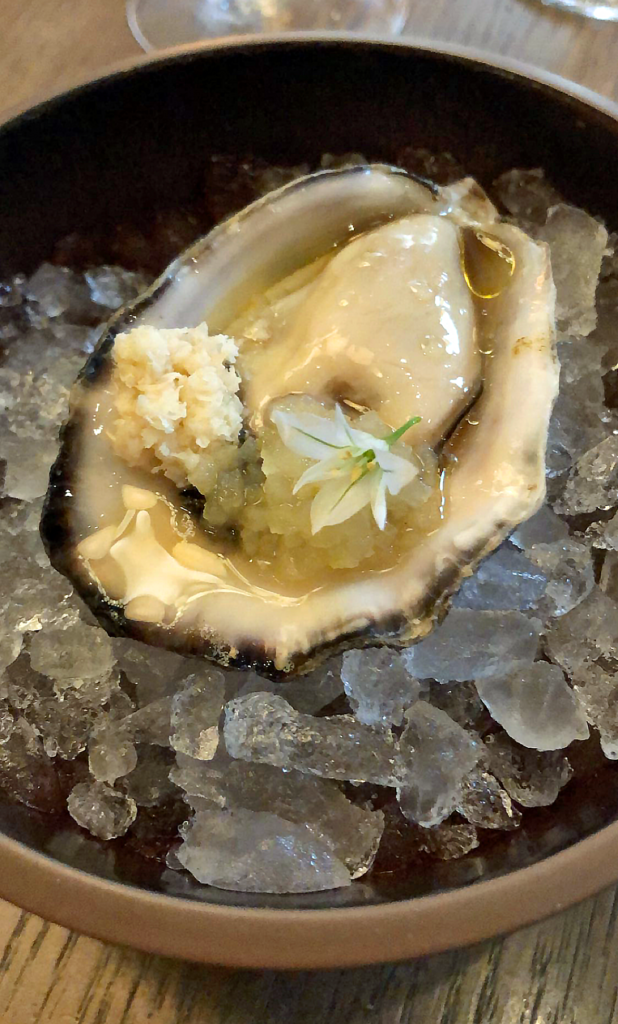
Who but the discount diner—the patron who wishes to play pretend as a gastronome for one evening—would be satisfied with a toast point of chicken liver, a solitary oyster, a few slivers of Hokkaido scallop, a few shavings of foie gras, a dubious fillet of monkfish, a couple meager slices of steak, and some wafers of chicory-flavored chocolate?
Yes, you overstate your case. Chicago certainly lacked many tasting menus in the sub-$100 range, and it is at such a price point that worthy chefs may transform the fine dining skeptic or amateur into a true believer. But such a wonderful worm-into-butterfly shift comes about by serving dishes that move well beyond average, everyday fare. And what such menus lack in luxury ingredients they must make up via well-developed flavors and flourishes of technique.
Bellemore’s opening tasting menu, priced at $85, featured a cauliflower custard with mushrooms, lemon, and trout roe. It featured a fall salad made of grilled beets, pumpkin seeds, quince, crispy grains, and whipped gorgonzola cheese. Next came a black truffle bucatini with chives and parmesan. Then a braised cod with more cauliflower, more lemon, some toasted hazelnut, and radicchio. The main course was the aforementioned Scottish wood pigeon that was glazed with vinegar and paired with chestnut, mushrooms, and farro.
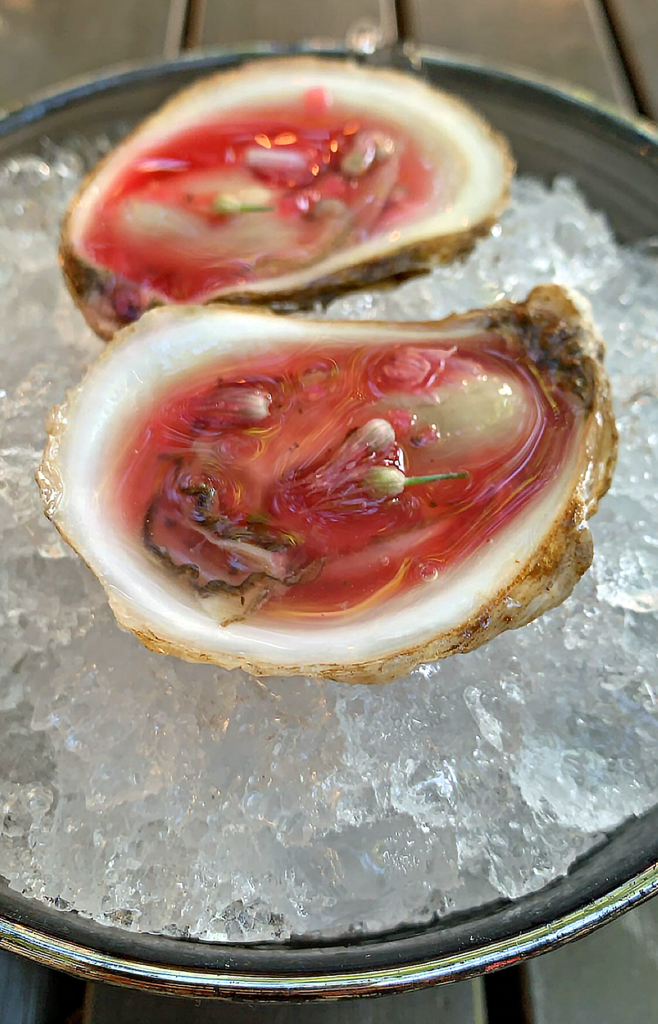
Does that not seem a bit boring, even for 2017? Yes, perhaps all those lemon, fruit, and vinegar elements qualify as “bright.” The plates are certainly more “beautiful” than the average chain restaurant. But “bold”? What can be bold about such standard executions of utterly anonymous fare?
Does any customer enjoy eating cauliflower custard, or is such a substance merely a vehicle for the texture of crispy mushrooms and trout roe? That salad sounds fine—it being defined, once more, by a crispy element of “grains.” But how many of Papadopoulos’s fans from Bohemian House—having now finished two of only five savory courses—could really be excited about a vegetable custard and a “fall salad”? Would it not seem a bit obvious that the tasting menu was seeking to pad its length with dishes most guests would not even think about ordering à la carte?
The third dish—the turning point—aims for obvious pleasure: a black truffle bucatini, dressed simply with garlic chives and parmesan cheese. But were the noodles handmade? You’d think such a “story” would beg to be told. And just where were the truffles sourced from? Is that not also the kind of “opulent” touch whose description tickles guests? (At $85 per person, Bellemore’s menu simply cannot afford to offer many shavings of any quality truffle—certainly not enough to anchor a plate of pasta that lacks any other, obvious source of flavor. You think shoehorning such a preparation into the tasting smacks of desperation, of leaning on the “shock and awe” provided by a luxury totem like truffle to resuscitate such an uninspired start to the meal).
The following dish of brown butter braised cod featured more cauliflower and more Meyer lemon. It also utilized toasted hazelnut—like the crispy grains and crispy mushrooms before it—as a means of textural contrast. “Radicchio grilled with tamarind” provides more of a complicating note. But how can the kitchen fall into such an obvious pattern across such a short menu? Whatever lack of limits the chef claimed had somehow driven him to use the same (or similar) ingredients in a familiar way. That might be fine for the à la carte section, but it denies the essential contrast between the elements of the tasting form. And, if customers are not paying for creativity, they should certainly be given satisfaction. Bellemore’s parsimonious fare—intelligent as its compositions might have seemed on paper—did little to overcome the notion that “fine dining” is overpriced.
The same must be said for that Scottish pigeon, a sparse couple slices of game meat that—at the very least—tipped its hat towards the stuffed birds perched around the dining room. Accompanying elements of chestnut, mushrooms, and farro reflect the same paint-by-numbers approach to plate-building at the restaurant. It’s all nuts, grains, and cauliflower or mushroom. And maybe that’s an expression of the season, but it reads as though the restaurant aimed squarely for midstream appeal: a mixing and matching of familiar elements whose flavors surely wouldn’t jar guests.
Just for reference, let’s look at Bellemore’s tasting menu from more than a year later. The Winter 2019 rendition clocked in at $95 per person for four savory courses (down one from five) along with the same two desserts. The cauliflower custard was substituted for a venison tartare featuring cheddar, pear, seeded rye crackers, turnip, and lime. Then came a “winter salad” of endives, more pears, some blue cheese, and toasted walnuts. The third course comprised Maine day-boat scallops atop Anson Mills grits with popper hominy and grapefruit. And lastly, standing in for the Scottish pigeon, was a 40-day dry-aged strip steak served with grilled kohlrabi, broccoli, and black truffle jus.
That venison tartare had been a stalwart of the restaurant’s à la carte menu since opening, and you respect that Papadopoulos saw it as worthy of leading his tasting menu. As a smooth receptacle for an assemblage of garnishes, the chunks of deer meat are infinitely more interesting than a cauliflower custard. But the shavings of cheddar, chunks of pickled pear, crunchy rye crackers, and “spicy” Tokyo turnips go a bit too far. Any two of those four elements could make for a “bold” dish, but all of them together simply seek to disguise the venison’s own depth of flavor. To use such a meat should mean indulging in what makes it most distinct, not reducing the deer to a mere textural foil for the same paint-by-numbers approach.
The “winter salad,” at the very least, distinguishes itself as part of the same proud Bellemore heritage as the original “fall salad.” That means more fruit (red wine-poached pears instead of port-braised quince), more cheese (blue cheese instead of whipped gorgonzola), and more crispy elements (toasted walnuts instead of toasted pumpkin seeds and crispy grains). Perpetuating some form of “seasonal salad” on each menu—one built upon some of the same essential contrasting notes as the prior example—is not altogether offensive. It offers returning guests something of a common thread to grab hold of.
But it’s still just a salad, a most-sorry representation of the chef’s “voice” or “vision” to place as one of now only four savory dishes on offer. At the increased price of $95, nearly half of the tasting menu—substantively—was devoted to a tartare and an endive salad. They were not flawed dishes by any means—not unpleasant or aggravating to eat. But they confirm skeptical customers’ worst perceptions of fine dining: that they are paying a whole lot more for food that sounds fancy but leaves them utterly cold. In many respects, the tartare and salad actually mirror each other by offering appealing elements of fruit, cheese, and crunch. But does fine cooking, guests may wonder, really mean throwing the same bits and bobs together in a bowl?
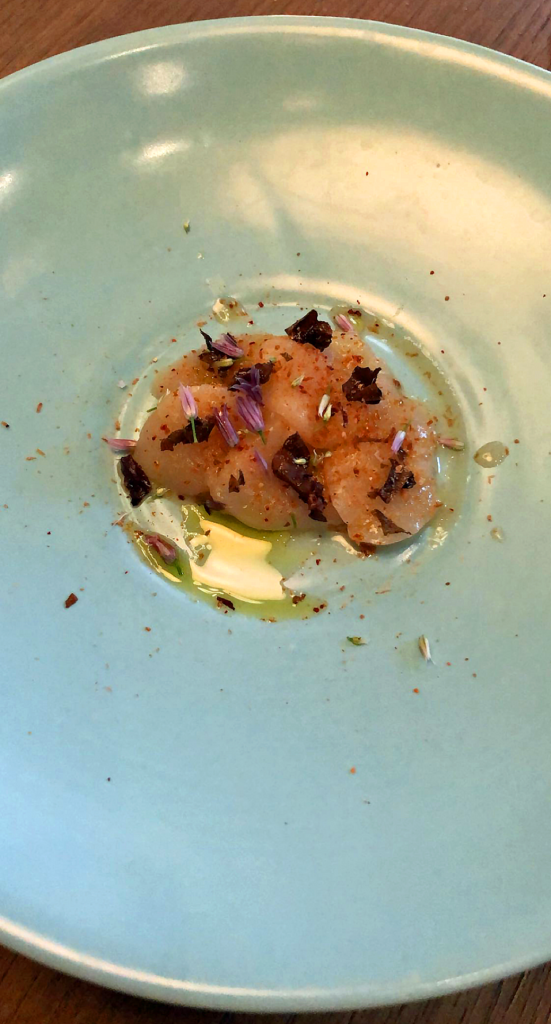
Bellemore’s 2019 tasting menu saw both the truffle bucatini and cod preparations replaced by a single dish of Maine day-boat scallops. Sourcing the bivalves from Maine and putting them atop Anson Mills grits actually speaks, you think, a bit more to that “storytelling” theme. For the only food stories worth telling relate either to the chef’s personal history or the terroir from which ingredients or recipes are sourced. (Of course, subverting or deconstructing a traditional form and its ingrained expectations may also be a worthy pursuit. But such a dish hardly needs to be spelled out if executed successfully).
Of course, Papadopoulos’s plate of scallops contains a couple of his favorite tricks: textural contrast by way of popped hominy and a burst of acid by way of grapefruit slivers. The addition of a smoked scallop element undergirds the two plump, seared expressions of the bivalve with a rich supporting flavor. All in all, you think this might have been one of Bellemore’s most successful dishes ever. It displays an attractive internal logic—“corn” grits and “popped corn” hominy, seared and smoked scallops—while underlining the sourcing of its ingredients. The dish qualifies as “bright, bold, and beautiful” but contains a rustic charm through which guests can appreciate the bivalves’ buttery texture and subtle sweetness with a touch of smoke.
The Scottish wood pigeon—despite its synergy with the restaurant’s aesthetic—was replaced on the tasting menu by a 40-day dry-aged strip steak. The beef—served in two slabs about an inch and a half thick—was accompanied by grilled kohlrabi, a couple stalks of broccoli, and a black truffle jus. Such a preparation seems competent but—in the context of a tasting menu—strikes you as rather cynical.
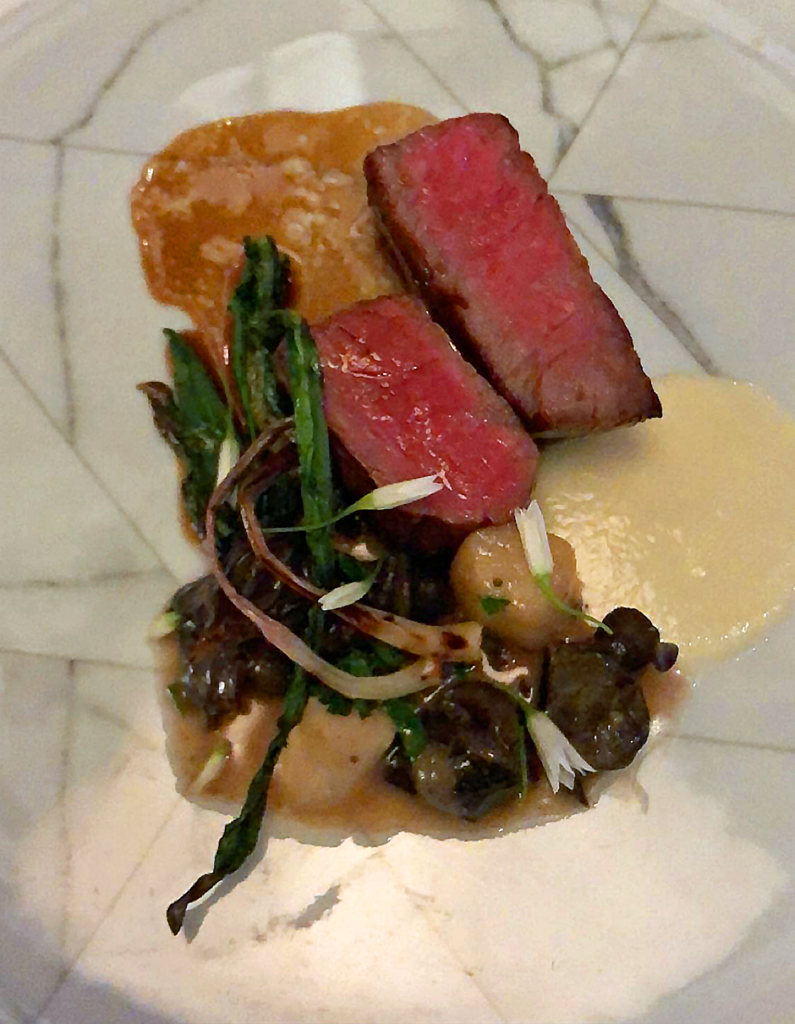
Other than the extended dry-aging—which serves to distinguish a cut of meat that boasts neither its source nor its grade—the steak dish is utterly basic. It panders to those aspirational fine diners who want to feel as though they’re engaging with gastronomy without actually stepping outside their comfort zone. Such a preparation smacks of culinary insecurity—why would someone come to Bellemore for a couple sparse pieces of steak and some anonymous vegetables? What “story” does such a dish reflect on a supposed “tasting menu”? The story of a kitchen that is desperate not to impress but, rather, to avoid disappointing.
Underneath any superficial appearance of opulence, Bellemore was ultimately a bargain bin fine dining establishment. Its press manipulation perpetuated an image of the restaurant as a “no limits” “new American classic” kind of place. The “Oyster Pie’s” viral appeal signaled that the establishment was willing to wield hallowed luxury ingredients in an engaging way. But it was all a confidence game. It was all hat and no cattle.
Though partnering with BRG formed the capstone on his meteoric rise through Chicago’s culinary ranks, you feel that Papadopoulos was made into something of a patsy by Boehm and Katz. How could it have been any other way when the chef could only regurgitate that “bright, bold, and beautiful” canard when speaking to the media? When a chef who fed stick-to-your-ribs fare to Chicagoans at Bohemian House would only reference the beautiful dining room Studio K had built rather than any vision for his food?
BRG saw a prime opportunity in the parcel that once housed Embeya. They saw a trendy chef in need of a new home, and he came readymade with a viral sensation in his back pocket. Past that point, Boehm and Katz clearly stopped caring about Bellemore’s cuisine. It would never be an establishment that sought to push boundaries or enchant with a clear vision for contemporary American cookery. Rather, the restaurant was merely an exercise in profit maximization. The BRG honchos substituted any true sense of Papadopoulos’s personality—any expression of the chef’s soul—with a fancy dining room, some fawning media praise, and a barrel full of buzzwords.
The restaurant’s “new American classic” recipes were almost entirely rootless. They reflected a “Boka-lite” style of cooking that had nothing interesting to say at a technical or cultural level. Instead, they merely juxtaposed a few reliable contrasting elements: protein, vegetable, nut/grain/seed, fruit/citrus, and cheese. The end result seemed balanced on paper but struck the palate as utterly uninspired. It was needlessly fussy and sparse in a manner that impeded enjoyment. It wrapped itself in the cloak of refinement—of “opulence” and “storytelling”—while lacking the depth and complexity of flavors that makes such small portions work.
Rather than cultivating Papadopoulos’s unique voice—one that had proven itself by renovating some of Chicagoans favorite Central European fare—BRG pigeonholed him into a concocted restaurant concept. They twisted the chef’s former “soulful” style into one that was, suddenly, sparse.
Did Bellemore ever really need to serve a tasting menu? Whether priced at $85 or $95, did those four or five savory courses ever blow customers way? You think their only appeal laid with guests who had never indulged in a “tasting menu” before and who found charm in the mere appearance of so many small plates hitting the table in succession. Bellemore was an aesthetic, experiential attraction. It was a temple for those who want to play pretend at eating “fine food.” And there’s no greater testament to that farce than the legions of lemmings who praised the “Oyster Pie” (not least of which Boehm and Katz themselves).
Out of the two menus you analyzed, the scallop dish is the only one you can call competent, and items like the cauliflower custard and seasonal salads strike you as absolutely dastardly. Not that they possessed an offensive taste, but, rather, that they were filler. BRG decided that Bellemore was the sort of place that “should” serve a value “tasting menu.” They formulated a price point they thought would drive traffic, and it was up to the kitchen to work backwards to try to justify it.
That would have been fine, for many places offer some “greatest hits” expression of the chef’s vision at a competitive price. Lowering the barriers to enter the “fine dining” world can be an admirable thing. But only if an experience of value (creative value, value in gustatory satisfaction) is derived. Otherwise, one is simply harnessing the perceived luxury of tasting menus to cheat the least experienced and most impressionable patrons.
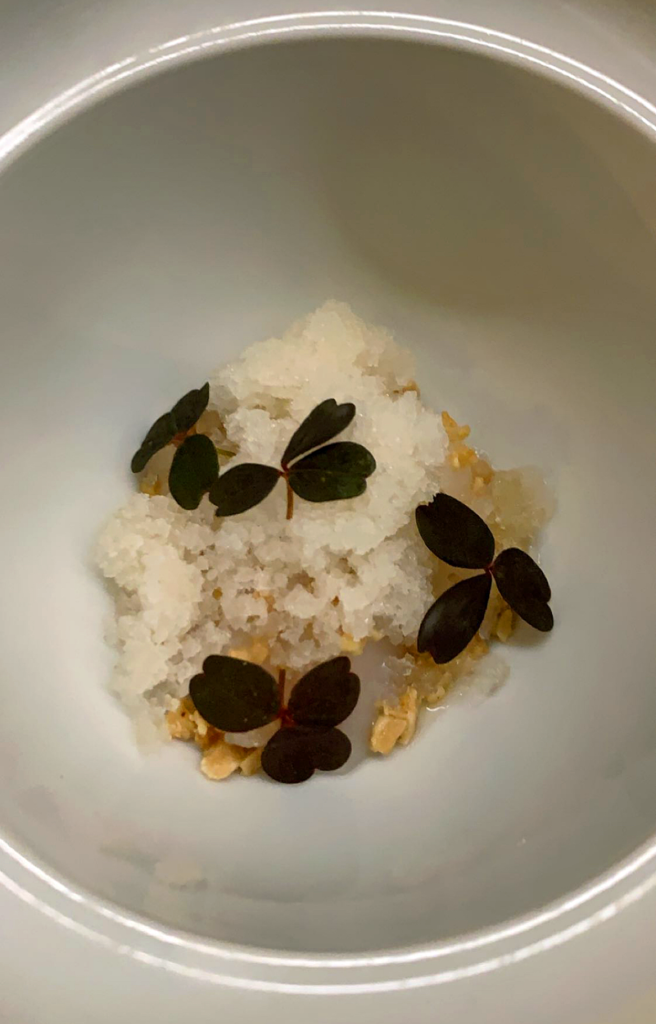
Bellemore’s tasting menu—compared to similarly-priced offerings from Elizabeth—took advantage of aspirational fine diners by serving pedestrian American fare. Compared to the contemporary American dishes served at Blackbird or Entente, the level of creative expression was absolutely dire. Bellemore’s food was not “new American classic” cuisine. It reflected a lowest common denominator of domestic cookery tailormade for rootless cosmopolitans.
“Bright, bold, and beautiful” meant that artistically-stunted yuppies could feel good about the food going into their pieholes. It wasn’t going to challenge their delicate sensibilities—or those of their philistine parents. But it would serve as the perfect set dressing for a luxurious restaurant experience™ courtesy of Boka Restaurant Group. They’d take their pictures and make their social media posts and keep the con game going: Bellemore would never offend, nor would it thrill. It was a bland place for bland people, but it thought itself worthy of representing itself as one of Chicago’s “best restaurants.”
“Bougie,” that’s the word Papadopoulos used to define the restaurant’s signature dish. But does the word’s connotation not embody all of Bellemore? The restaurant stood as nothing more than a manifestation of BRG’s marketing muscle. Boehm and Katz—despite securing one of the city’s rising stars—neutered the kind of cooking for which Papadopoulos was known. Instead, they favored merely palatable fare that would not interfere with their media-driven mirage. And the popular chef, rather than embodying the soul of the establishment, became something of a shallow figurehead for the honchos harebrained expansion of the “Boka-lite” (now the BIÂN) model of cynical, anonymous American cooking.
Bellemore operated with the delusion that it was a “luxury” restaurant. It convinced naïve consumers that they would receive unparalleled value within that genre. But BRG—despite all the song and dance of the “storytelling” theme—delivered nothing more than average food in ostentatious wrapping. Boehm and Katz put forth a barren, soulless vision of modern American cuisine defined only by perceived extravagance and viral potential. Bellemore’s menu barely transcended stereotypical “meat and potatoes” fare. In fact—once allows for the presence of some nuts and shaved cheese—it only differed in the sense that the portions were reduced and the plates dressed in needless descriptive flourishes.
You could stomach the restaurant’s “Oyster Pie” and its cut-price tasting menu as mere rules of the game. Those elements might have served as the principle lures from which Bellemore built a steady flow of traffic that might empower further creative expression. But it felt as though Papadopoulos was forced to cook with one hand tied behind his back for the duration of the establishment’s operation.
This was no better expressed than throughout the pandemic when the chef pivoted towards the kind of cooking that built on his beloved Bohemian House style (and that might have made Bellemore a lasting success). Freed from the expectation of crafting “bright, bold, and beautiful” dishes that propagated the restaurant’s illusory luxury credentials, Papadopoulos designed two of the most delicious set meals in all of Chicago.
The first, an item that Papadopoulos had been making for the restaurant’s family meal “for years,” was a BBQ jerk chicken served with coconut rice, pineapple slaw, red beans, and habanero chutney. Both times you ordered the set dinner, the Amish bird was perfectly succulent and positively enrapturing in its combination of smoky, sweet, and spicy flavors. The accompanying items did not simply offer contrasting notes—in the manner of the compositions featured on the restaurant’s tasting menu—but amounted to a complete sense of satisfaction. You felt happy and full rather than merely titillated by a few sparse plates that thought themselves more intelligent than they really were.
Along the same lines—but, perhaps, delivering even greater pleasure than the jerk chicken—was an Oktoberfest-themed assemblage. It comprised pork schnitzel, smoked knackwurst, weisswurst, braised sauerkraut, boiled potatoes, sweet & sour red cabbage, mushroom spätzle, a cucumber & tomato salad, rye bread, and apple strudel with whipped crème fraîche for dessert. As with the chicken, you ordered this meal twice and was absolutely blown away each time. The Oktoberfest set was a veritable bounty in which no holds were barred in an effort to deliver happiness.
And it is unfair to say that either of the family meals were thoughtlessly “traditional.” Sure, they embraced classic forms. But each of the techniques demonstrated—from the jerk spice to the schnitzel and sausages, from the coconut rice to the spätzle—was unerring. Actually, you would even say they were refined. They surpassed even the examples seen at the sort of restaurants that specialize in such fare. And they very clearly showcased the same culinary mind that had customers flocking to Bohemian House.
Papadopoulos clearly possesses a mastery of comfort food forms, and he marries it to a rare discernment that may streamline classic recipes without ever losing sight of their fundamental appeal. You did not try Bellemore’s Greek roasted pork dinner (served with house-made pita, smashed cucumber salad, and wood-grilled baba ghanoush), but it looked like another winner.
And are these expressions of Jamaican, German, and Greek tradition—translated and made accessible to a wider population—not the essence of “new American classic” cuisine? Do they not reflect a “big tent” of American culture that can bend locally-sourced ingredients towards representing the full kaleidoscope of ethnic influences that have shaped the country? Why was Papadopoulos forced into such a narrow “bright, bold, and beautiful” or “opulent” mindset when the chef is clearly so talented at this inclusive, world comfort food style of cookery?
Perhaps Boehm and Katz thought such a concept was too lowbrow. Maybe it’s the kind of accessible, pleasing food that—in its ability to please the masses—does not do enough to stroke the honchos’ egos. All you can say is that such engaging large format feasts would have brought you into Bellemore each and every week. These compositions—rooted in a defined, rather than an abstract, sense of America’s many ethnic influences—tell a natural and beautiful story of cultural exchange and adaptation. They embody—in the manner the constituent elements work together in a cohesive fashion—a true sort of culinary storytelling. They unite guests in the shared pleasure of a well-laden table and underline how—through food—diverse peoples may come to know and accept their neighbor.
This, to you, is the essence of contemporary American cooking: sourcing as locally as possible—rooting one’s meal within a larger sense of community—but embracing the full beauty and freedom of the countless recipes and techniques that have become part of the cultural “melting pot.”
Bellemore under Papadopoulos might have been a testament to the riches Americans receive through their multifaceted heritage. It might have stood for a sense of comfort and satisfaction that absolutely transcends (and unites) diners of all backgrounds.
But BRG sought the superficial appeal of viral dishes in a well-manicured space. Boehm and Katz wanted to open a seemingly highbrow concept that could attract the attention of the national press. They liked the idea of offering a “tasting menu,” regardless of whether it offered the slightest bit of quality. They enjoyed having one of the city’s cult chefs at the helm, even if he served as little more than a mouthpiece for the designs of their marketing team.
BRG sold Chicago short in their pursuit of shallow, fleeting “prestige” at Bellemore. The stilted style of cooking they foisted upon Papadopoulos was an insult to the splendor of American cuisine. They all but scuttled the chef’s career so that they could play pretend at having a sexy, trendy restaurant for a couple years. And Boehm and Katz revealed themselves as restaurateurs increasingly concerned with appearances over substance. They view Chicago diners as saps who do not need to be satisfied so long as they are served the right photo-op.
The BRG honchos proved themselves more than happy to obscure a rudderless, soulless, emasculated kitchen behind the veneer of a Studio K design. The demonstrated that a lust for the easy money of faux luxury had eclipsed their duty to be stewards of the city’s dining scene. Boehm and Katz parade themselves as “James Beard Award winners” but are nothing more than craven businessmen whose chosen medium is the restaurant.
They pretend they are friends to chefs, yet they view them not as craftspeople but conduits through which they snare the public. “Hospitality,” to that effect, is nothing more than another marketing gimmick. It’s a shield behind which BRG hides its rampant greed, its prostitution of talented artisans. Though they stalk the stage at events like the Welcome Conference, BRG are hospitality wolves in sheeps’ clothing.

Will Alla Vita suffer the same fate?
Lee Wolen seems like a fine fellow, and his bonhomie with Papadopoulos struck you as one of the more genuine elements of BRG’s culture. But the cuisine at Boka has long left you cold. In fact, the degree to which Wolen and Papadopoulos’s menus mirror each other is disturbing. The former, surely, possesses the fine dining chops to execute “bright, bold, beautiful” and anonymous American cuisine competently.
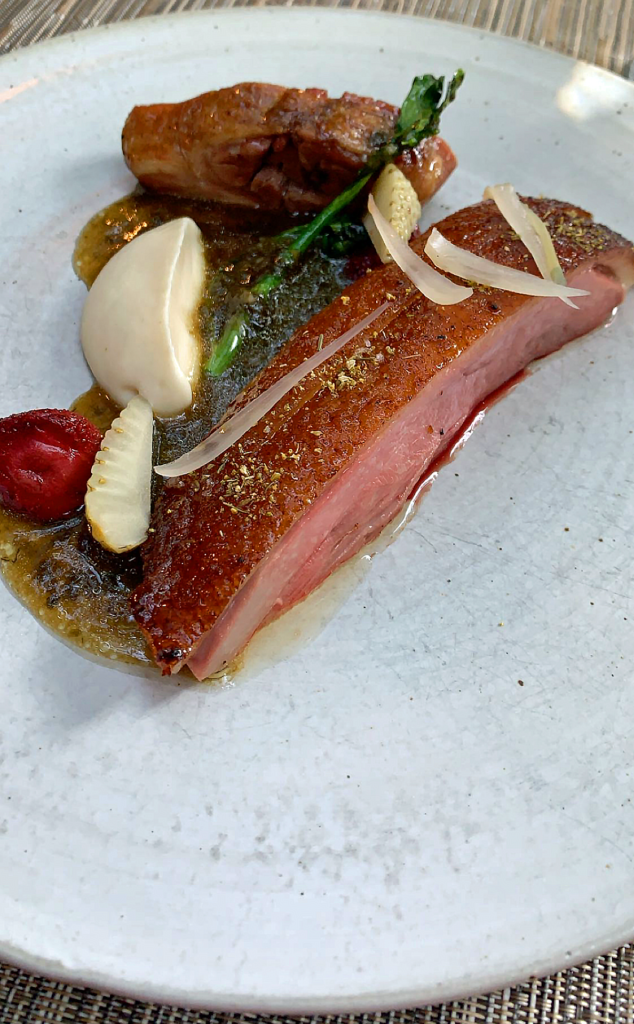
Yet the whole-roasted, dry-aged duck that has formed the cornerstone of Boka’s à la carte offerings (and, for you, a requisite supplement to the restaurant’s eight-course tasting menu) falls far short of the Eleven Madison Park version from which it takes inspiration. Neither the crispness of its skin nor succulence of its flesh has ever been superlative. For being one of the focal points of Wolen’s menu, the duck would not even rank among the best examples in Chicago. (You dream, instead, of the honey-glazed whole Rohan duck once served at The Loyalist. Hell, even Roister’s rendition wiped the floor with Boka’s).
Yes, selling truffles at cost is something Boka should be proud of. And the restaurant bills itself less obnoxiously than Bellmore did: “Chef Lee Wolen’s seasonal American food centers on beautiful ingredients and expertly executed preparations.” See? No deference to “storytelling” here!
Wolen’s work at Boka displays—as Bellemore did at its worst—a sparseness and lightness of touch that maligns American cuisine. Yes, quality sourcing can indeed empower a simpler manner of cooking. But “beautiful ingredients” are not enough—they must sing on the palate.
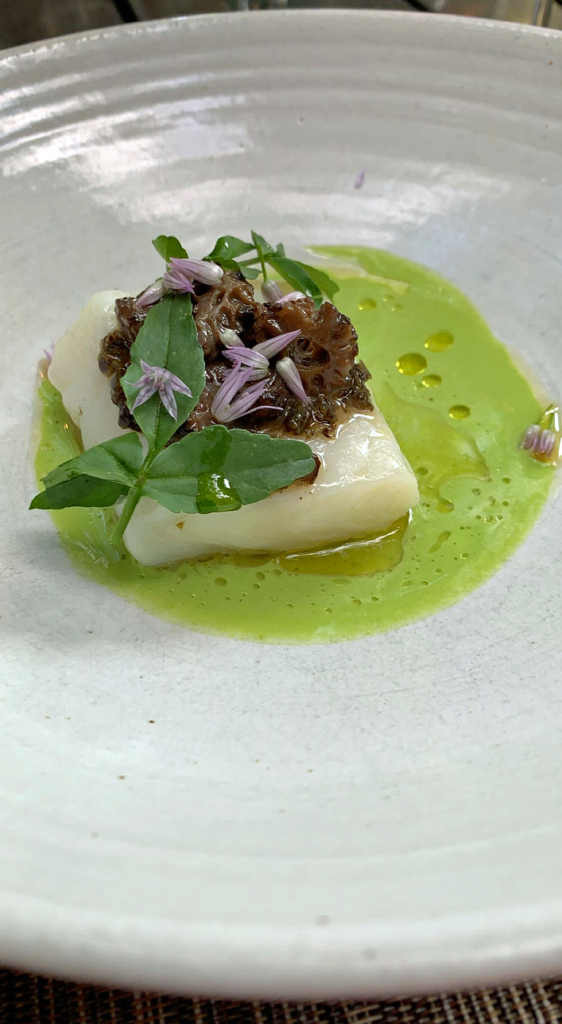
The restaurant’s compositions are visually striking in their minimalism, but their resulting flavors lack both complexity and depth. Wolen’s cuisine is certainly approachable, and Boka appeals to a class of diner for whom Blackbird was and Smyth is too “experimental.” (Sepia, you think, forms a fitting point of comparison). But working within the realm of classic techniques and a certain typicity of dish construction demands that the chef deliver a high level of satisfaction. “Beautiful ingredients” and “expert execution” must be wielded in pursuit of guests’ pleasure or they only amount to window dressing.
Boka’s cuisine reflects the same cynicism as Bellemore’s, one that plays to accessibility more than self-expression and pretense more than distinction. Using familiar ingredients is fine, but a chef should not simply arrange them around the plate. As members of a flavor symphony, they must play with force rather than indulge in a lowest common denominator sort of Muzak. But a bite that is particularly savory or herbaceous or tangy—before being brought into balance by a dish’s accompanying elements—threatens to turn off remedial palates. And doing so narrows the restaurant’s appeal and its ability to generate profit.
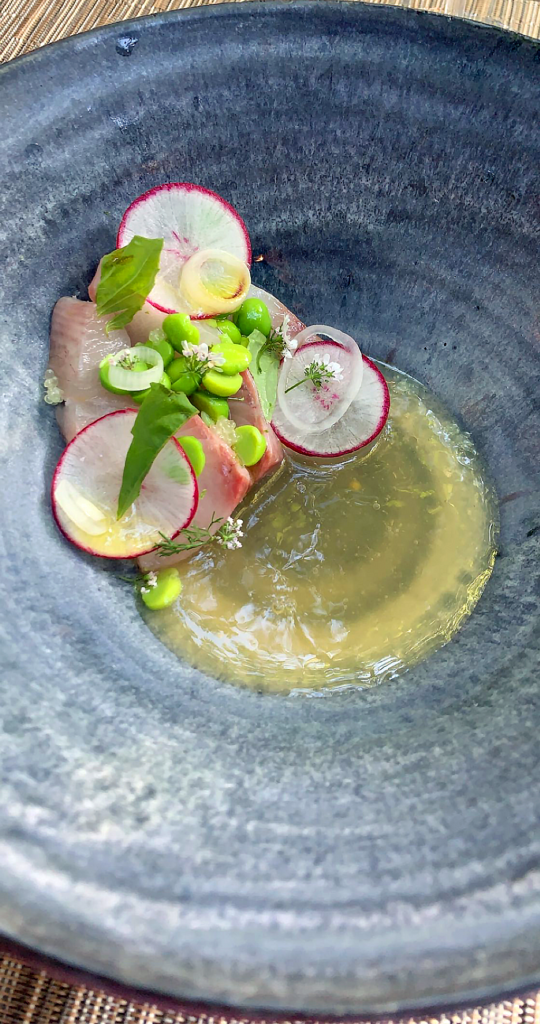
Gifted with the chance to shape the Midwest’s understanding of “seasonal American cuisine,” Boka chooses the path of least resistance. Wolen’s menu is utterly unambitious, and eating his food is not much fun. Yes, the small, fussy plates feel like “fine dining,” but—that is to say—they cater only to a marketing fantasy. The dishes sound and look fancy but feature no rough edges. They are pleasant (not gripping, not memorable). They do the bare minimum to justify the ticket price while BRG leans, as it always does, on ambiance and aesthetics. The wine list—other than a grandfathered collection of Keller Riesling you were happy to pick off—has been put out to sea. But what fine diner really needs vinous pleasure when there are brightly-colored cocktails to photograph? Wolen’s food completes the photo-op and, otherwise, seeks only not to offend.
Can you blame Viceroy for severing ties with BRG? You regularly patronized Somerset under Wolen, particularly for brunch. But, looking back, you must admit that the venue’s appeal—like all of Boehm and Katz’s recent misfires—was purely aesthetic. The pedestrian food was enlivened by tall ceilings and an expansive patio. And, while Somerset attracted the Gold Coast glitterati, it could never be confused for a dining destination. The restaurant succeeded due to the coincidence of its location, its serendipitous curb appeal. Not one single noteworthy dish came out of that kitchen, and Viceroy surely knew they had nothing to lose by exchanging Wolen for a chef who might actually invigorate the concept. The patio prowlers will keep swilling their mimosas either way.
Having proven themselves so desperately out of touch when it comes to “contemporary American” cooking, what exactly do BRG and Wolen have to say about Italian or Italian American cuisine? What might they offer the genre that hasn’t been done before? And whose identity, whose tradition will Alla Vita actually be rooted in?
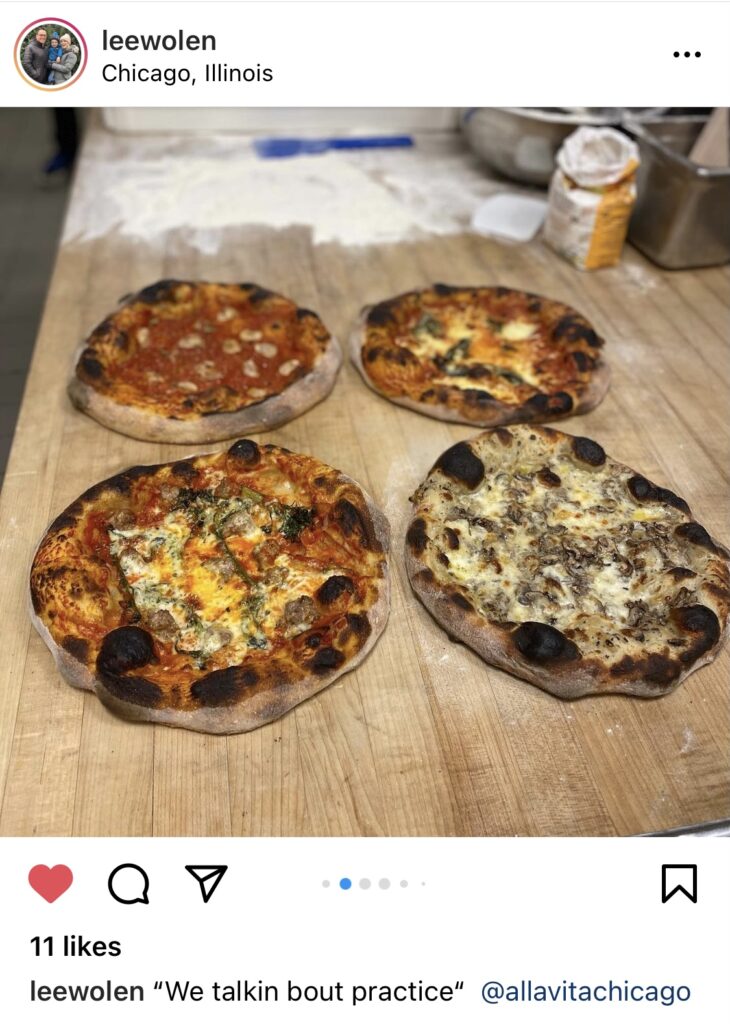
Last week, Wolen showed off some neo-Neapolitan pizzas that will surely form part of Alla Vita’s menu. You will not lie: the pies looked pretty appealing. Their shareable size and proudly-rustic design provide some of the first clues as to the nature of BRG’s “neighborhood Italian restaurant.”
From pretension at Bellemore to pandering at Alla Vita—might that be the move? Having failed at bringing a “bright, bold, and beautiful” “Boka-lite” to West Loop, Boehm and Katz have sought comfort in the most popular of all culinary genres. They have decided to go toe-to-toe with Monteverde and Rose Mary—to say nothing of Bar Siena, Ciccio Mio, Piccolo Sogno, Riccardo Osteria, RPM Italian, Formento’s, and fellow newcomers Gioia and Adalina. What might Alla Vita offer—let alone excel in—that these other establishments have missed?
Wolen might possess technical mastery, he might be adept at sourcing Midwestern ingredients, but can he cook Italian food with soul? Does he have anything interesting to say about a cuisine that has been westernized, easternized, deconstructed, and fused in every conceivable way?
BRG’s 2019 Balena pop-up—followed by the Momotaro Italia pop-up in early 2020—signal that the group has been weighing a new Italian concept for some time. While Gene Kato’s work at the latter concept—judging by your two visits there—could be hit or miss, there is no question that Japanese-Italian “fusion” has never been seen in Chicago. And, if restaurants like Mesebaba and PELLEGRINO are anything to go by, that same style of cookery has been notably and successfully indulged in Tokyo itself.
A full realization of the Momotaro Italia idea would have been a bold move. It would have presented the city with a clear, novel vision for what BRG might offer the stacked Italian / Italian-American genre. It very well could have weighed in on a national conversation regarding the future of the beloved cuisine’s form.
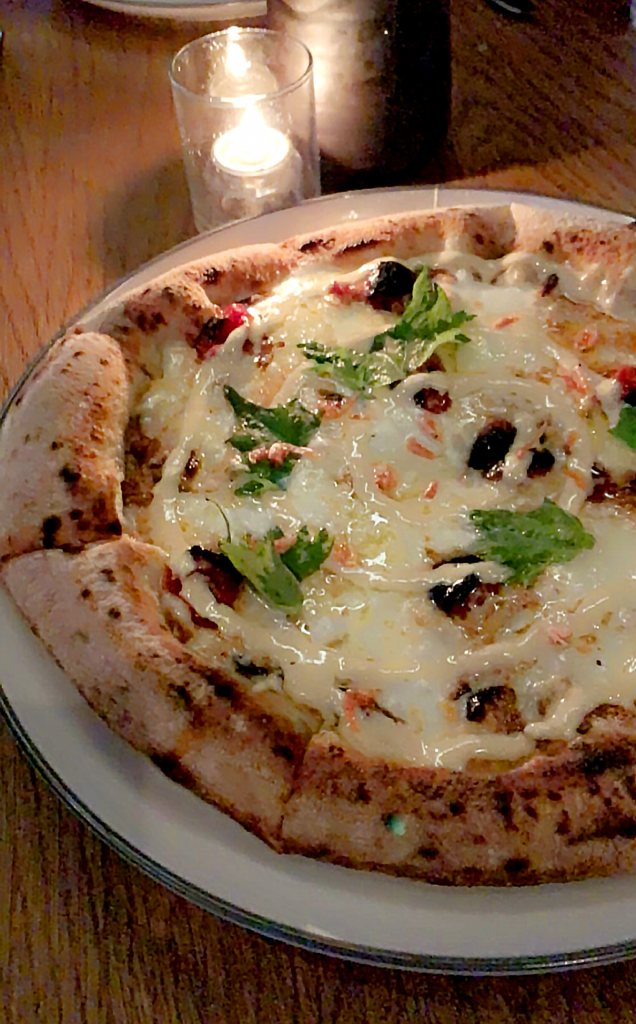
But adding Japanese ingredients onto pizza or pasta might have narrowed the restaurant’s appeal. You think Kato certainly possesses the talent to fuse the cultures thoughtfully, but the concept leaves little room for boilerplate Italian fare. Momotaro Italia, by the very nature of its mashup, would have necessarily challenged customers with new flavor combinations. It would not have the luxury of hiding behind an impenetrable veil of Studio K aesthetics and marketing buzzwords. It could not obscure boring-but-accessible fare behind an opaque “new American classic” paradigm.
Momotaro Italia, whether or not it succeeded as a full-fledged concept, would have moved Chicago’s dining scene forward. Alla Vita, as it stands, only looks backwards. It’s nothing but a bit of filler for the fallow Bellemore space: a guarantee that guests will cram high-margin fare like pizza and pasta down their gullets.
“Alla Vita,” with its nonsensical name, reflects the same paucity of vision—the same absence of a distinct identity—as Bellemore. But, by aiming even lower, it might very well “succeed.” That is to say, it will succeed in the only manner that matters to Boehm and Katz these days: padding their pockets.
BRG will swap Bellemore’s meager American menu for family style Italian. They’ll take down the stuffed birds and undo some of the “manor’s” opulence. But the space will continue its precipitous decline from the glory days of Embeya, from fully-realized, distinct cuisine into increasingly cynical cash grabs in which selling food merely becomes commerce—not hospitality.
Boehm and Katz—secure in the shiny baubles they brownnosed their way into—can now roleplay as enlightened restaurateurs for eternity. Meanwhile, BRG abdicates its role in shaping Chicago’s culinary legacy. They franchise, derive, and rehash to secure their lucre, reducing the Windy City evermore into a lowest common denominator dining destination.
Behemoths like LEYE, Gibson’s, and Hogsalt moderate their imposing scale—their perceived dominance—through an earnest effort to please guests across all strata of tastes and price points. Wine lovers and novices alike, for example, might equally benefit from these groups’ largesse when browsing the bottle list. A special effort is made to offer enough depth and breadth to enchant each of the myriad types of customers who reside in or visit Chicago. Not one segment of the dining population is looked down upon, nor are any diners pushed to indulge in some false expression of luxury. The city’s shining lights of hospitality operate with a striking sense of honesty that ensures every party’s singular needs are acknowledged and met.
BRG, instead, operates in the realm of marketing fantasy. It butters its bread by hoodwinking its audience, by selling them on a conspicuous consumptive experience they lack the knowledge or discernment to see through. Bellemore had all the requisite pieces in place to please guests even more than Bohemian House did—Papadopoulos’s pandemic family meals clearly showed he had not lost his touch.
But Boehm and Katz bent their “bright, bold, and beautiful” concept into a total farce. They positioned the restaurant’s food as the least important part of the concept, relying on superficial palatability and a public relations push to create the appearance of success. The BRG honchos assumed Chicagoans were dumb enough to find value in anonymous “Boka-lite” American fare served within a sexy space. They thought the ostentatious “Oyster Pie” could anchor a menu that, otherwise, indulged only in paint-by-numbers combinations of fruit, crunch, cheese, and protein.
Chicagoans are not as dumb as Boehm and Katz think they are—though Alla Vita, by all accounts, embodies an even steeper descent into greed-driven madness. Noting the manner in which Bellemore’s “new American classic” menu failed, BRG thinks that grafting Italian food onto the same space must be a sure thing. To Boehm and Katz, Papadopoulos’s pathetically restrained cooking did not appeal broadly enough. They fail to understand that they direly clipped the chef’s wings—pushing the him to cook for their egos rather than from his heart.
Maybe Wolen is simply better at enacting their orders? Yes, he’s held onto BRG’s solitary Michelin star—but Somerset’s failure must ring some alarm bells.
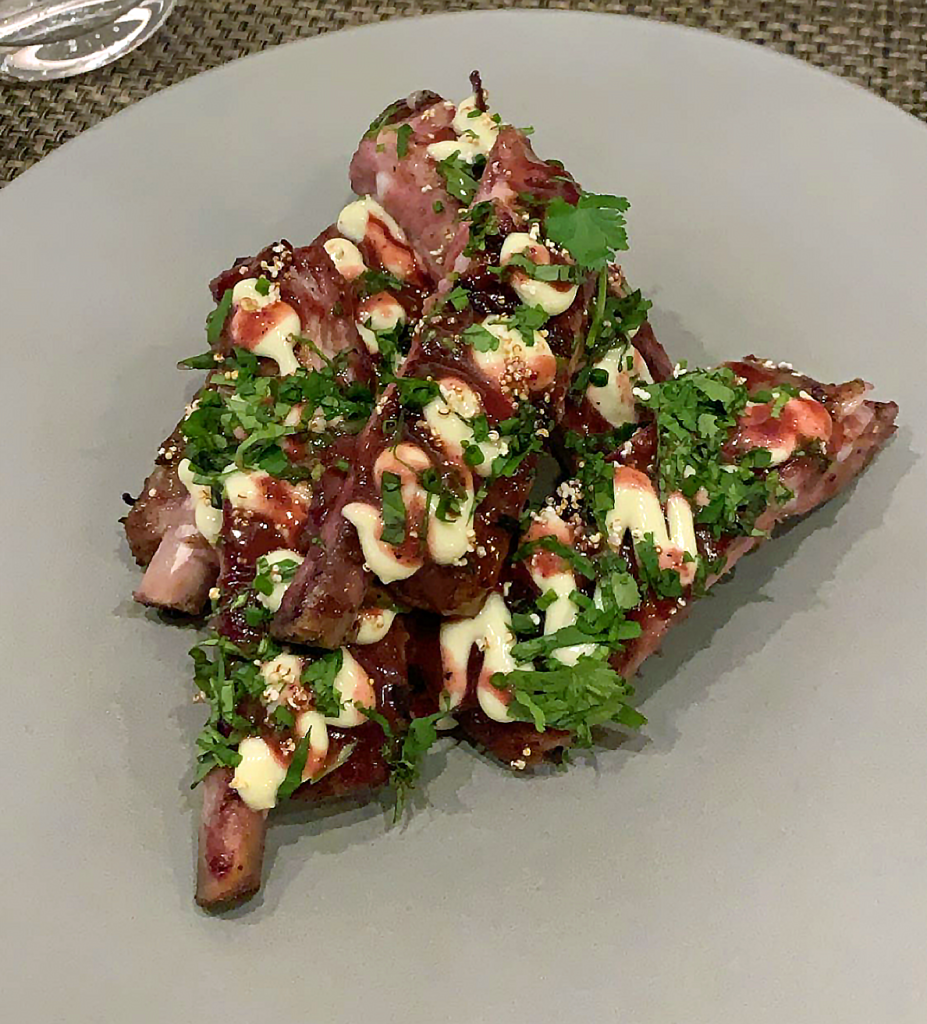
Cooking contemporary American food—the kind so well-represented at Blackbird (RIP), Entente, and Smyth—demands inspiration. A chef must stare into the abyss of the national culture and discern something that nobody else has sensed before.
Wolen hasn’t shown such an instinct at Boka, nor did he do so at Somerset. The chef is good at slinging chicken sandwiches (and, you must imagine, earns his masters a healthy margin doing so). Soon, he’ll be slinging pizza and pasta too.
Alla Vita promises—on paper—to deliver a level of satisfaction that Bellemore never quite attained. But the choice is not so binary. A contemporary American restaurant can be inventive, refined, and still highly-pleasing. And a “neighborhood Italian restaurant” need not ignore the many thoughtful ways the world’s most predominant cuisine might be melded with Midwestern ingredients and soul. (To wit, Spiaggia’s newest chef—in a manner reminiscent of alumnus Michael White—has just embarked on that very journey).
Boka Restaurant Group seems to oscillate between offering faux-luxury and engaging in out-and-out cash grabs. Boehm and Katz no longer look to the future of Chicago dining, but, instead, seek to maximize profit in the market as it stands. They leverage their group’s reputation as they aim lower and lower at an ever-widening base of customers.
But delivering chef-driven hospitality demands offering something distinct, not derivative. It means leading the city towards a deeper appreciation of cuisine, not leeching off of tried-and-true favorites to secure a piece of the pie in a woefully saturated market.
While the details of Alla Vita’s opening menu remain to be seen, BRG’s mishandling of Bellemore can hardly inspire confidence. Wolen—despite possessing no obvious affinity for the concept—deserves the chance to distinguish his “Italian” restaurant from all the others.
So you await the restaurant’s opening with bated breath. It’s undoubtedly a turning point for Boehm and Katz. Will they guide Chicago towards a brighter future, or will they finally be revealed as craven opportunists who came into a bit of luck?
Surely, there is nothing wrong with opening pedestrian concepts that do little more than meet expectations. The vast majority of restaurateurs operate in such a manner. But how many brand themselves as luminaries and weasel their way into awards? How many cozy up to the national food press to cast a stultifying shadow over their city’s independent proprietors?
Chicago deserves a class of dining worthy of those bygone days of Le Francais, Charlie Trotter’s, and L2O. It demands leaders, not leeches, who might dream up the kind of concept that restores the city’s rightful place on the global gastronomic map. Boehm and Katz, though they posture as world class restaurateurs, are working to stifle the city’s appreciation of food. They privilege shallow hype and marketing drivel over depth and value. They don’t want consumers to think too hard or grow in their tastes—for it’s far more lucrative to offer anonymous fare as they strip the carcass of Chicago’s former reputation clean.
No, perhaps Boehm and Katz are not wolves in sheeps’ clothing after all—but brazen vultures. For wolves possess boldness of action and independence of thought, and Boka Restaurant Group seeks only to enrich itself through the managed decline of Midwestern distinction and taste.


